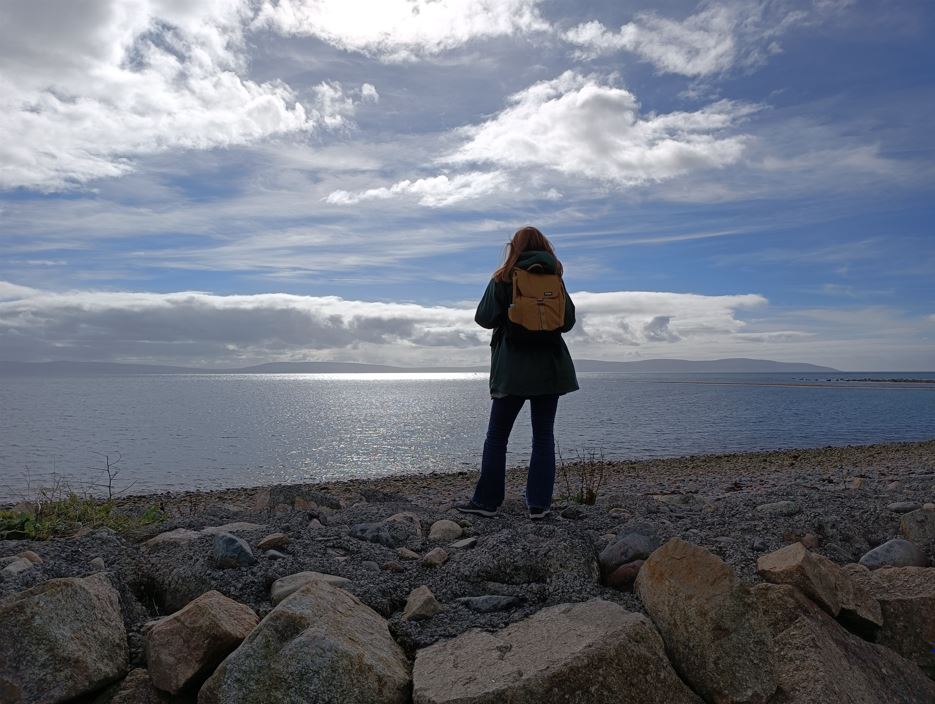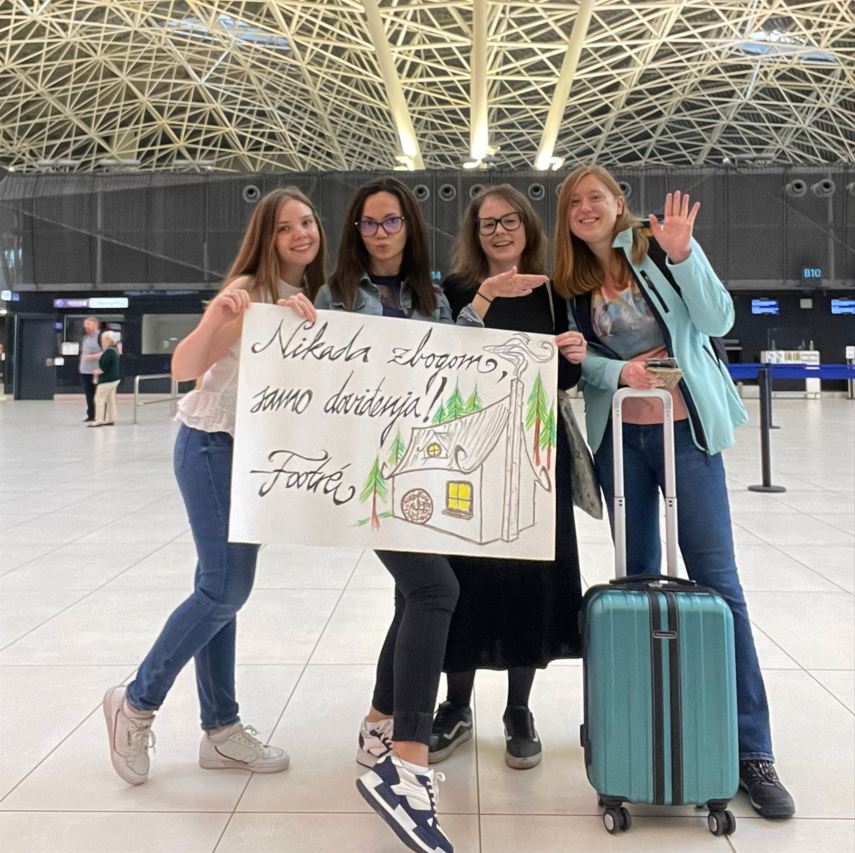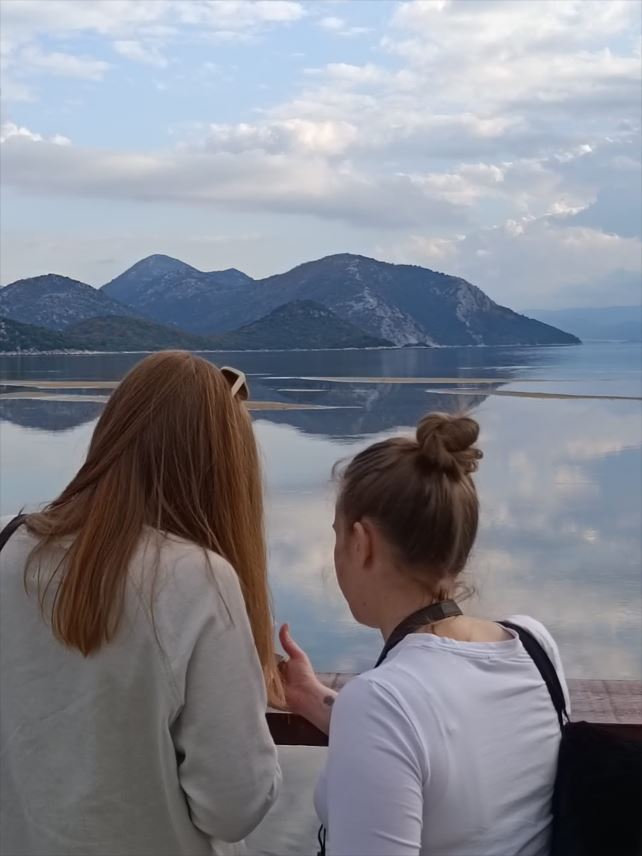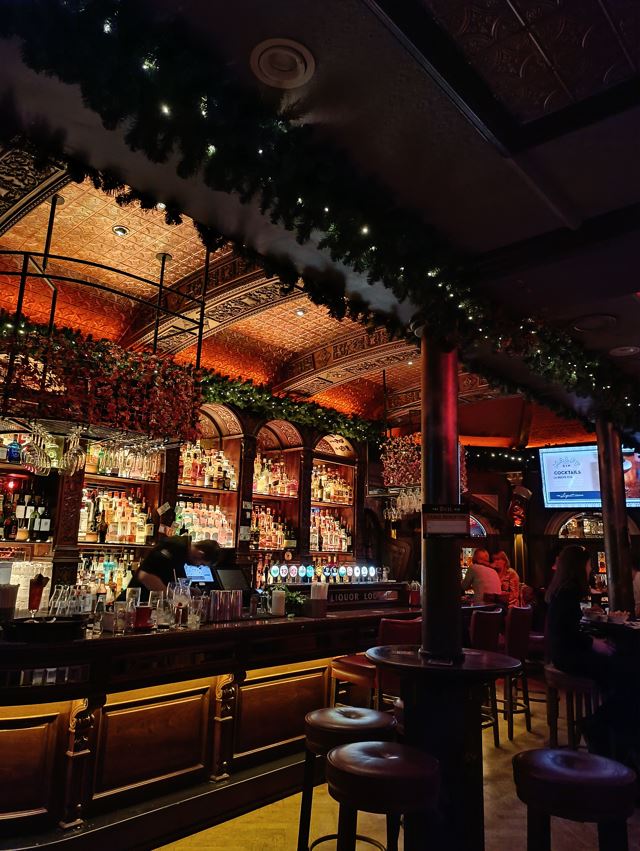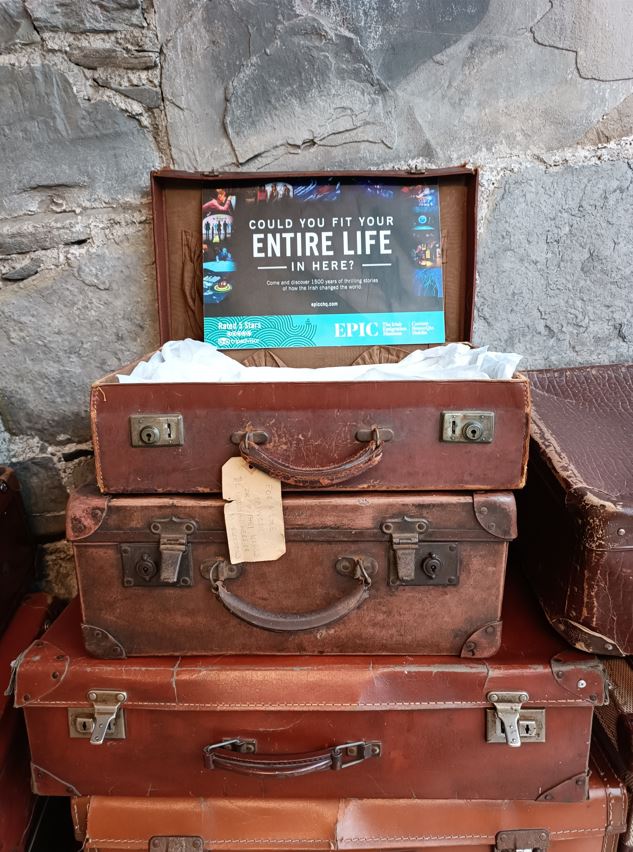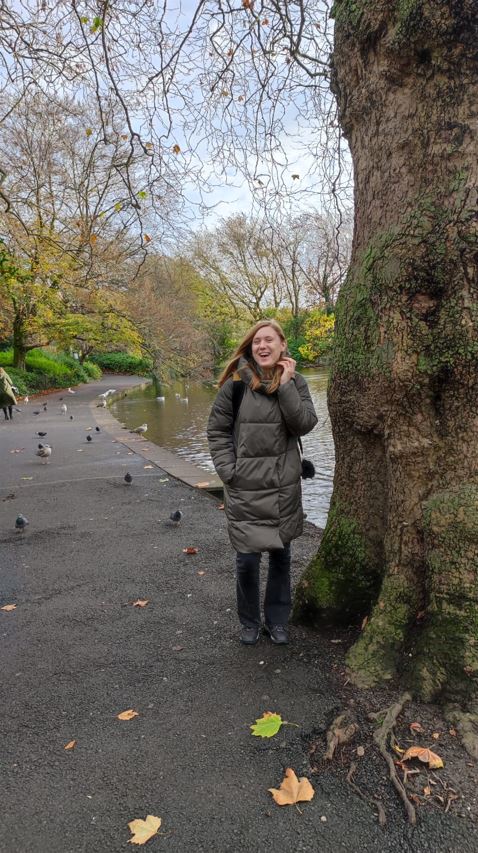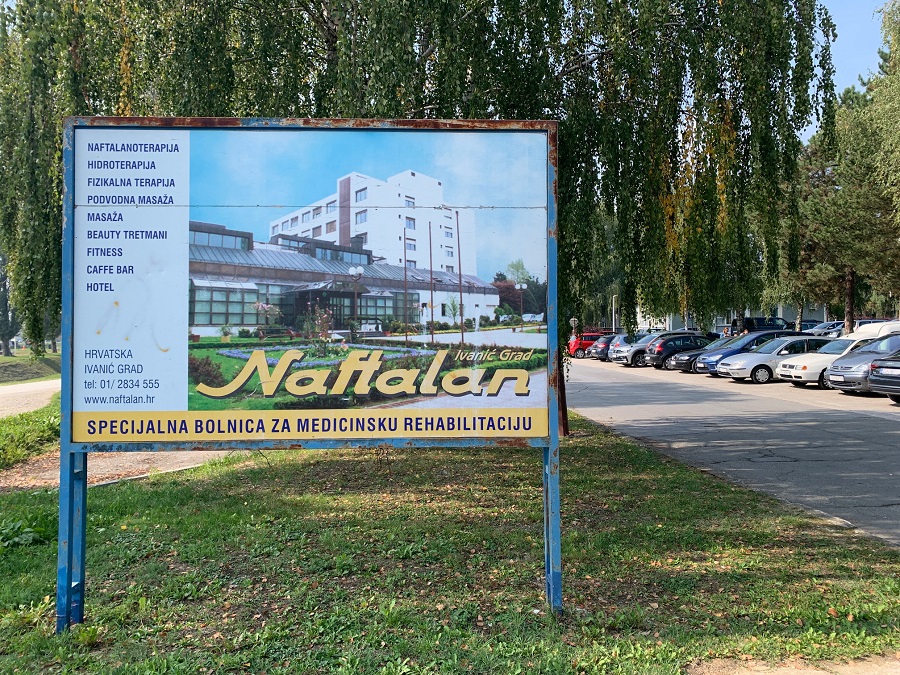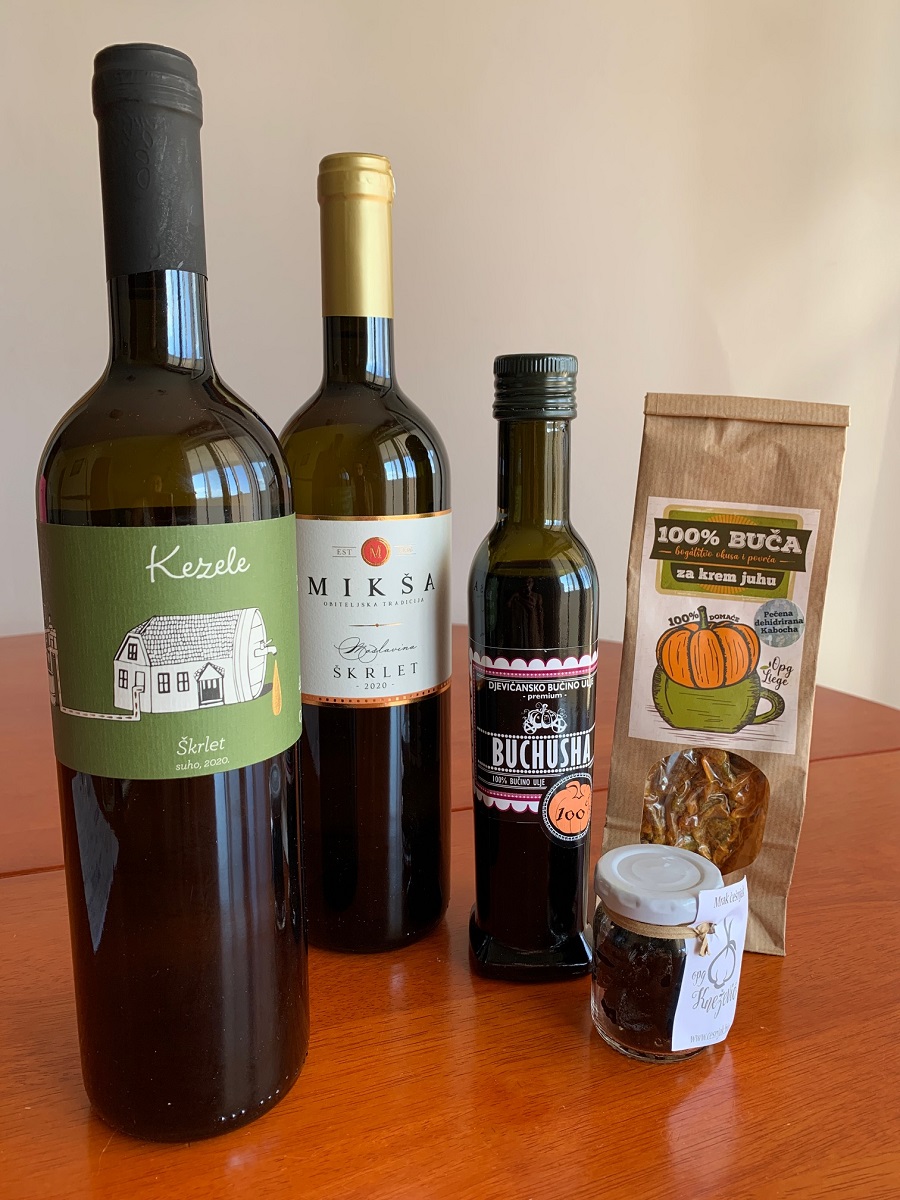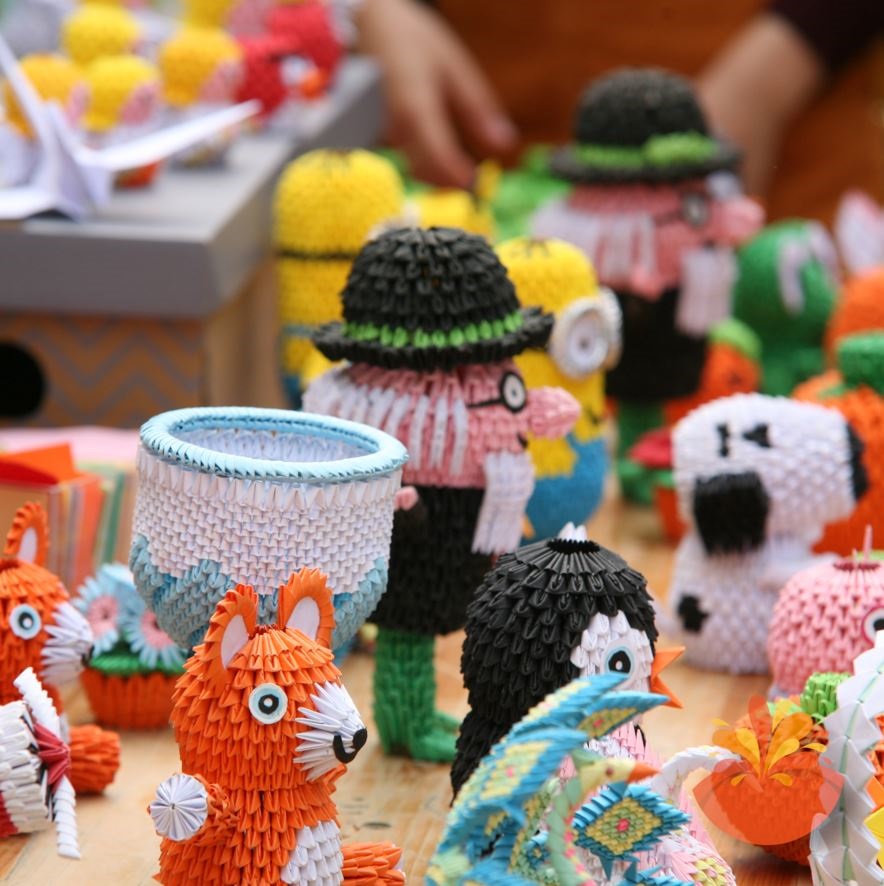Croats Living in Croatia, Earning Abroad: Barbara Boltiš in Ivanić Grad
January 5, 2023 - The Croatian dream - to live in Croatia and get income from abroad. Meet the locals who are living that dream, and find out how you could, too, in a new TCN series. In the latest in the series, meet Barbara Boltiš, who is enjoying life in Ivanić Grad.
Croatia, great for a 2-week holiday, but a nightmare for full-time living unless you are very rich, so the perceived wisdom goes. The Croatian dream is to live in Croatia with a nice income from abroad, as many foreigners and remote workers do. For Croatians, if I read the comments in my recent video, Croatia is the Best Place to Live: 8 Reasons Why (see below), salaries are too low and people are forced to emigrate in search of a better life.
While there is definitely an element of truth to this, it got me thinking. The era of remote work is here, and the workplace is increasingly global, with a labour shortage for many skills. It doesn't matter if you are from Boston or Bangladesh if you have the skills, desire, and work ethic, and are able to work remotely online. And while it is certainly true that salaries in Croatia are low, what about the opportunities that the global online marketplace offers? If foreigners can find ways to live in Paradise and work remotely, why not locals? Curious, I posted this on my Facebook and LinkedIn:
Do I know many Croats who are living in Croatia, but working remotely for international companies who would be interested in being part of a TCN interview series showcasing living in Croatia but earning online, including advice to others on how to get started? It could be an interesting series. If interested, contact me on This email address is being protected from spambots. You need JavaScript enabled to view it. Subject Remote Croatia.
Some 15 emails - and several inspiring stories - later, and I think we have the makings of what could be a rather interesting series, Croats Living in Croatia & Earning Abroad. Next up in the series, Barbara Boltiš in Ivanić Grad.
I’m Barbara, and if you are not from Croatia or a neighbouring country, it will be a challenge to pronounce my surname, but you can give it a try – it’s Boltiš. I grew up and I live in the small town of Ivanić-Grad near the capital of Croatia. After finishing high school in my hometown, I studied communication science at the University of Zagreb. During these years, I discovered I enjoy writing. My passion for writing inspired me to start my blog, which led to my first gigs as a content writer and also to learning more about digital marketing. After getting a university degree, I worked in a Croatian company as a Digital Marketing Specialist. When my one-year contract expired, I had a now or never moment and packed my bags for Ireland. I landed an amazing remote-first job in an international company CXC Global. In a nutshell, after three months in Galway, a series of events and many personal reasons made me pack my bags back to my Croatian hometown. The best part was being able to keep my job and not sacrificing anything in the process.
1. Many Croats are emigrating but you not only chose to stay, but managed to achieve the Croatian dream - living here and working for an international company. Tell us how you did it.
As I mentioned earlier, after quite a few student experiences and one year in a Croatian company, I just felt like there must be some kind of hack to have a better life. I didn’t want to settle. And I’m a (calculated) risk taker by nature. In August 2022, I started to apply for jobs on the Irish version of the website Indeed. By the second half of September, I was already working remotely as a Digital Marketing Specialist for a CXC Global EMEA in Galway. After three months in Galway, I just felt like I wanted to go back to Croatia. At that point, the job was the only thing I was happy with. And the people in my workplace were pleased with me too, so there was only one way to go about it – work remotely from my hometown.
2. Looking for jobs based in Croatia can be a challenging task. How challenging was it for you to get where you are today - it must have taken a lot of determination and rejection.
Well, I think nobody will like this answer, but I would say it wasn’t the hardest thing in the world. From my university years up until now, I was rarely jobless. During my university years, I was also active in a student association, writing on my blog, having various interests, and working on different projects. All these things made me more employable, which resulted in getting the job more often than not. Before I decided to leave Croatia, I had the option to open up my business with clients in line, but I just wasn’t ready to take that step. I was also offered a job that was based in Zagreb, but I didn’t want to live through the same story again. So, I wouldn't say I experienced so many rejections, and the ones I did I see as a redirection to better things.
3. If you can do it, presumably others can too. Are you aware of others who have had similar success, but maybe in different industries?
Yes, I know quite a few people based in Croatia in different industries that can work remotely, earn more and have international clients. For example, one of my friends works as a therapist. She can have sessions with clients via phone calls or video calls. I also know some people that work in the IT industry. Even in the creative industry, there are Croatians nowadays owning Etsy shops and offer their products in a global market. I would say it’s possible but it depends on the industry.

4. What is the general feeling among people in Croatia today: Is it possible to have a good life here, or is the grass greener on the other side?
I think there is a general feeling of being stuck in one place. Many people are complaining about how bad everything is and not doing anything about it. Since I’m a full-on optimist, I think people can have more than a good life here in Croatia. The grass is greener wherever you water it. It depends on personal priorities and the type of risk an individual is willing to take. For me, waiting 10 years in one company to have a somewhat decent paycheck is not an option.
5. Apart from corruption and nepotism, low wages are often cited as a reason to emigrate. But with the remote work revolution, as your example has shown, as well as the influx of many foreign workers to the likes of Rimac and Infobip for example, show that a good quality of life IS possible in Croatia. What are your thoughts on that?
I agree, the only problem that nobody talks about in these scenarios is that many Croatian-based companies still require people to be present in the offices. I believe that not everybody (including me) wants to live and/or commute to Zagreb and Split. There is still not enough trust from the employers' side toward employees when it comes to remote work. In the terms of living a so-called Croatian dream, I think many companies are saying that you can live a Croatian dream, but only if it’s in Zagreb or maybe Split. Also, we have an IT boom, while other industries are not moving so much. We cannot depend only on one or two industries as a country, that’s why I would focus more on what each individual can change for themselves, rather than looking a collective situation.
6. What advice do you have for others who would like to stay in Croatia, but have no idea where or how to find a possible remote work job or business as you have managed to do?
I know that it is scary to move on from things that seem familiar and to do something different. It’s not the most comfortable to not know where you will land or if you will land at all, but it’s so much better to try than to continue doing something you don’t like for the next month, year, or decade. Take some time out, write what you would like to do, and if you are not qualified to do this thing you want to do, start with some small goal because setting up a big goal means setting up for failure.
For example, if you would like to be a content writer, start by reading blog posts. Then, maybe you can think of the niche or industry you would like to write about. When you have these two things, you could volunteer to write a piece for a small business website or create your blog or a LinkedIn article. If you are qualified, start applying only for jobs that you like, don’t put pressure on yourself, and if it says remote-first based in a particular country, apply anyway. It can turn out that you are a candidate that they are looking for, and they would be able to make an exception, or they can contact you in the future in case something pops up.
7. Three reasons you decided to stay in Croatia, and the one thing you would like to change in this country.
- People. I love Croatian people. I have amazing Croatian friends that I just can’t compare to anything and anyone. I love the way Croatian people are relaxed and easy to talk to and always ready to help. Also, I like our bluntness.
- Nature and climate. As a person that requires a lot of outdoor time to feel and be sane, I like the fact that the Croatian climate allows me to be in nature all year round. Croatian nature is indescribable, I’m so lucky to live in a country that I could spend my whole life exploring, and still wouldn’t be able to see everything worth seeing.
- Local food. I’m able to step outside of my house and just take everything I need to make a full meal from the vegetables in a garden behind the house I live in. In case anything is missing, there are always relatives and friends that bring eggs, pomegranates, tangerines, lemons, and all the other goodies.
I would change more than one thing, but the main thing I feel is the root of the problem is a victim mentality. It seems like it’s always somebody else fault for everything that is happening. I feel that each individual should take the responsibility for the role they are playing in society. If you want to have a better life, move your ass and stop complaining.
****
Thanks Barbara, very inspiring, and congratulations on all your success.
You can follow the rest of this series in the dedicated TCN section here.
If you would like to contribute your story to this series, please contact This email address is being protected from spambots. You need JavaScript enabled to view it. Subject Remote Croatia.
****
What is it like to live in Croatia? An expat for 20 years, you can follow my series, 20 Ways Croatia Changed Me in 20 Years, starting at the beginning - Business and Dalmatia.
Follow Paul Bradbury on LinkedIn.
Subscribe to the Paul Bradbury Croatia & Balkan Expert YouTube channel.
Croatia, a Survival Kit for Foreigners is now available on Amazon in paperback and on Kindle.

Naphthalene Oil, Europe's Unique Medical Tourism in Naftalan, Zagreb County
June 19, 2022 - Croatia's emerging medical tourism industry has some rather unique features, including good news for those battling skin diseases - Europe's only naphthalene oil.
The story begins with a legend of a camel far, far away in a time gone by on the fabled Silk Road. A camel on one of the many caravans travelling on the famous trade route collapsed due to disease and exhaustion. Figuring out that there was not much they could do apart from making the camel comfortable, the merchants of the caravan left the camel in the shade in an oasis next to a large, dark lake, then departed on their way. Unable to stand, the poor camel slipped and fell into the dark lake.
Months passed. The merchants passed the oasis again, this time in the opposite direction with the returning caravan, and they were astonished to find the camel alive and well, relaxing in the shade of the oasis. Noticing the darker colour of the camel due to the lake, the merchants concluded that the lake must have some magical healing powers, and they scooped up some of the dark liquid and continued on their journey.
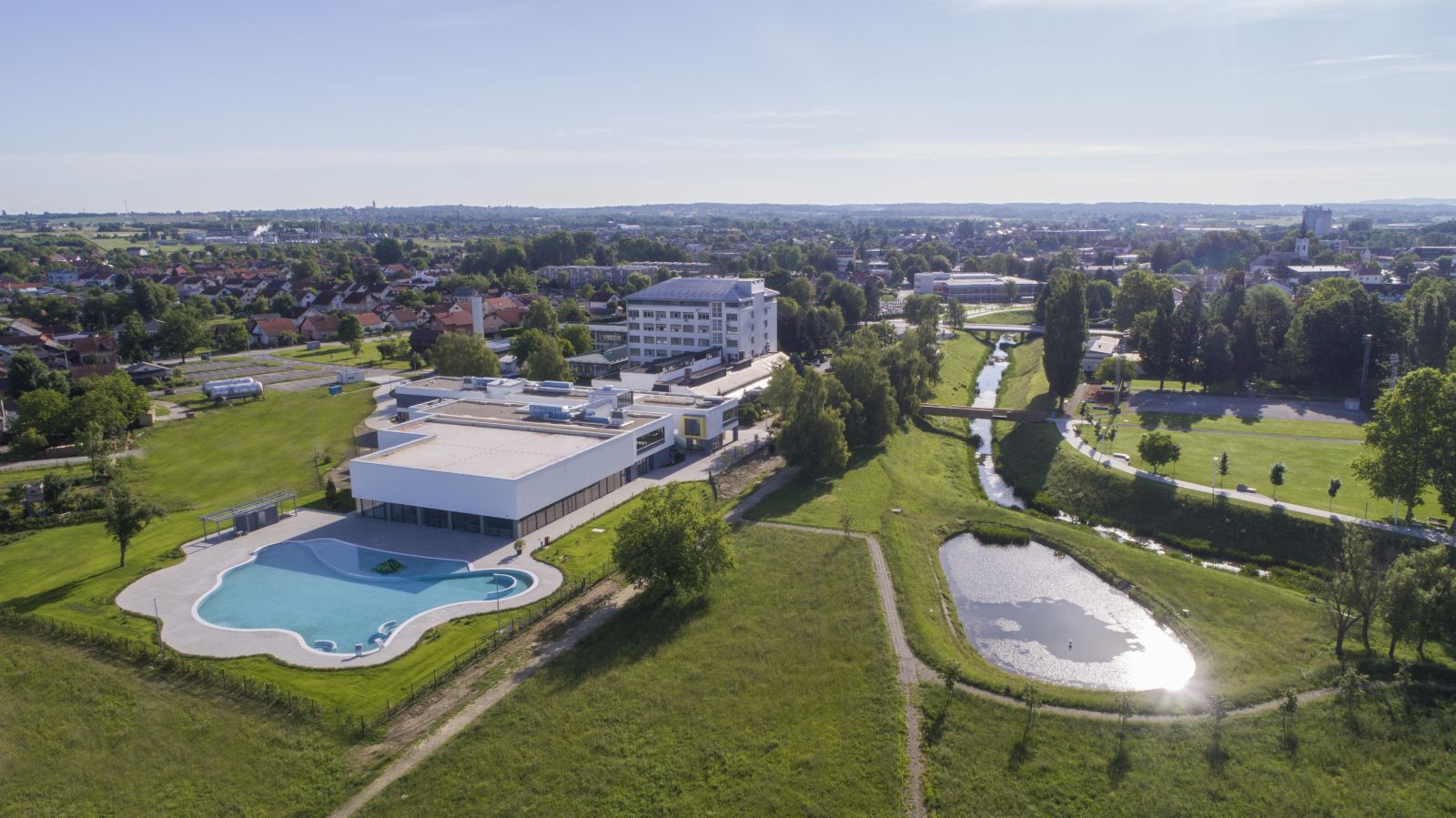
And that is how naftalan, or naphthalene, came to be discovered. It soon became highly sought-after in eastern medicine as a remedy for skin diseases, and came into regular use in eastern medicine in the 19th century. But it could only be found in the oil-producing country of Azerbaijan, where the city of Naftalan was founded. Marco Polo paid tribute to it on his Silk Road travels 700 years earlier.
And then, in the 1970s, far, far away in a country called Croatia (ironically the country of Polo's birth), a well of naphthalene oil was found close to the town of Ivanic Grad (which has its own oil-producing heritage), currently the only place in Europe apparently where one can find this dermatological treasure.
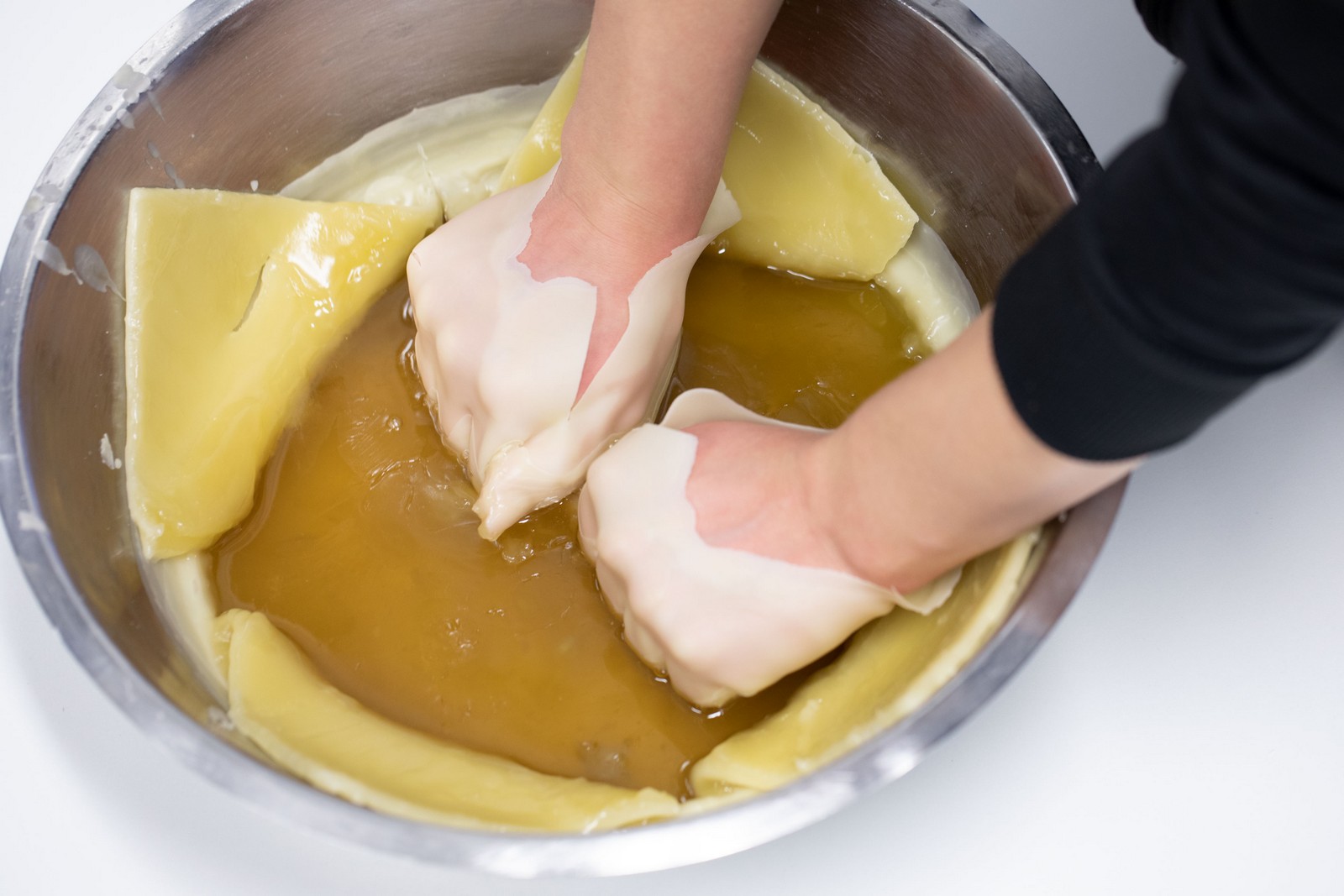
The unusual discovery is attributed to the remnants of what was once the mighty Pannonian Sea. Naphthalene oil has been formed from biological, organic material by the deposition of the remains of dead microorganisms, more precisely phytoplankton, zooplankton, bacteria, algae and higher terrestrial plants on the bottom of the sea or lake, where they were covered with mineral particles.
Yet another unique treasure for Croatia!
Such a treasure indeed that in 1989 Special Hospital Naftalan was opened near Ivanic Grad, just 30 kilometres from Zagreb. In the last 30+ years, it has become a haven for patients with various skin complaints, and the team at Naftalan have successfully added a range of products and treatments.
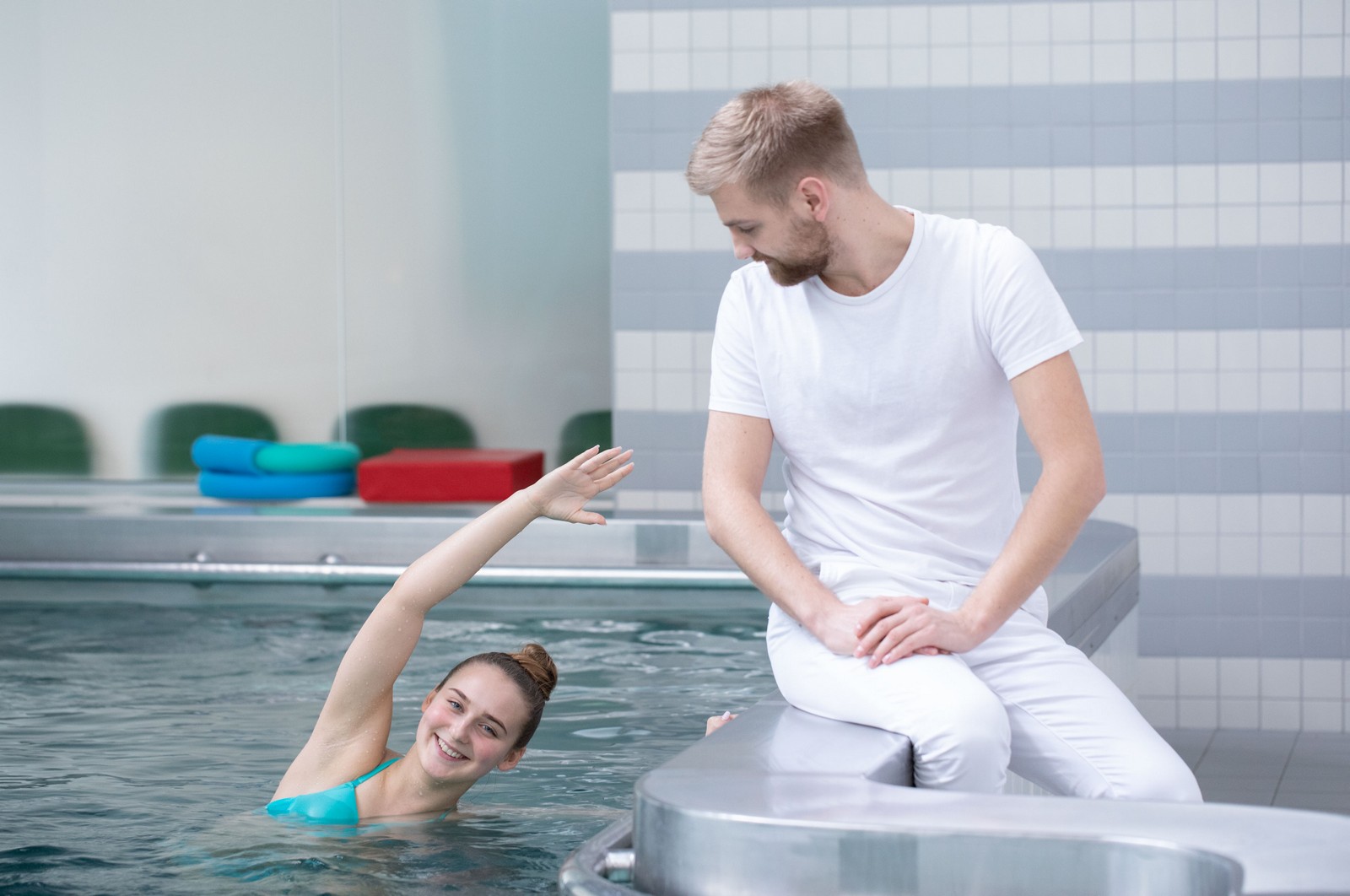
Through years of work, the experts of Special Hospital Naftalan have developed naphthalene therapy, which was proven efficient for treating psoriasis, an unpleasant chronic disease, and the related psoriatic arthritis. Naphthalene has anti-inflammatory and desensitizing properties and affects the metabolism of proteins and electrolytes.
The treatment includes specific, unique procedures - baths in naphthalene tubs, iontophoresis with naphthalene, mastic therapy (a healing mixture of naphthalene, paraffin, and camphor helps to reduce pain and to recover after suffering a brain stroke), ultrasound combined with naphthalene or with phototherapy.
In addition to all the medical therapies, the hospital has developed an impressive range of cosmetic products based on naphthalene oils, creams, and shampoos, created and produced by the Naftalan subsiduary, Ivalan Terme. The aim is to develop the range into a full cosmetic line to satisfy the needs of customers with dry or problematic skin.
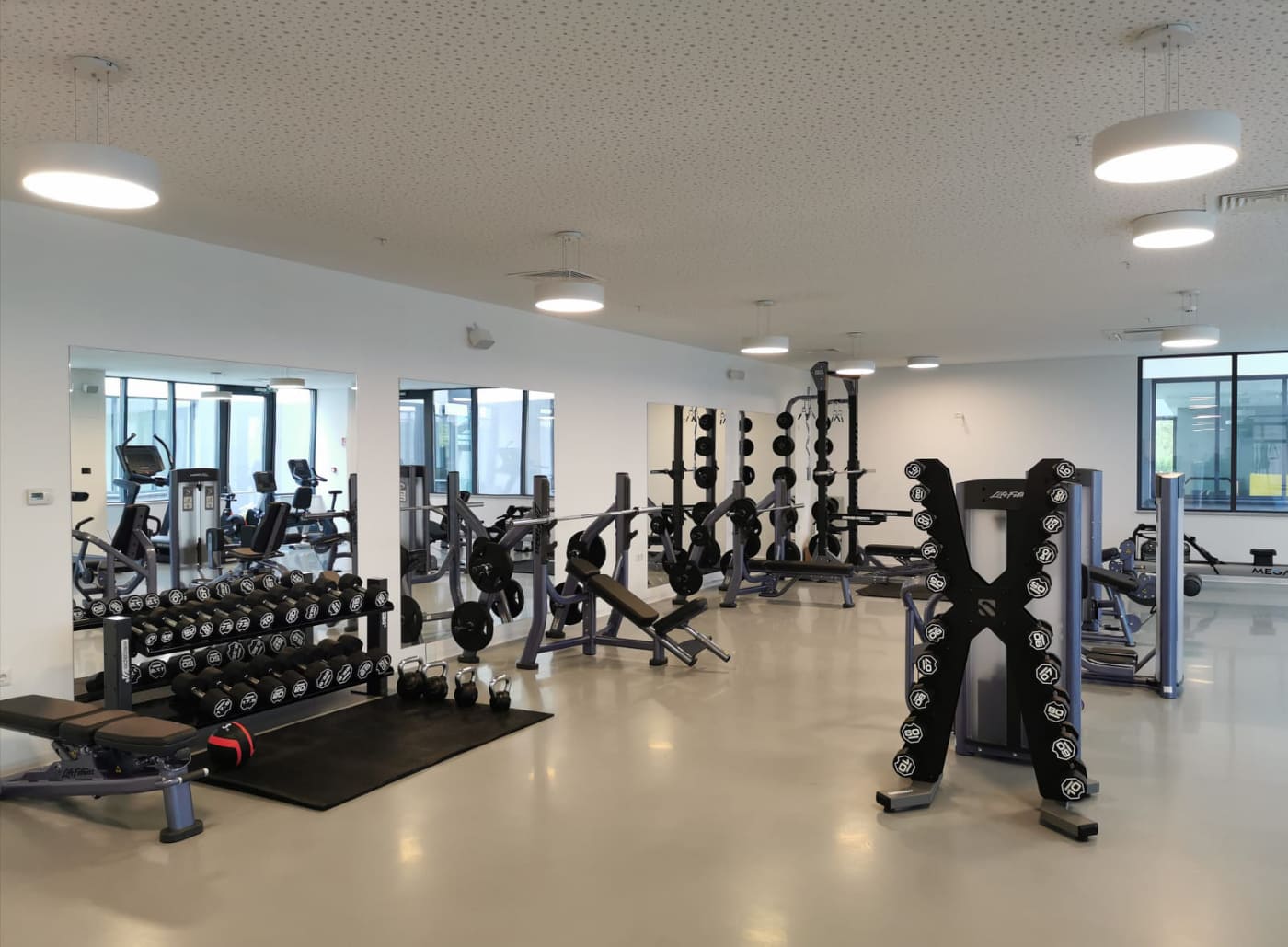
Naftalan is the only hospital in Europe and one of the few in the world to provide treatment for skin and inflammatory rheumatic diseases using a unique natural resource - naphthalene mineral oil. Since opening its doors over 30 years ago, the special hospital has enjoyed considerable success and expansion, treating over 20,000 patients in that time. A high number of those guests come from Scandinavia, Germany, Italy and Russia.
Naftalan boasts 137 beds, of which 26 are luxury. The general facilities have been expanded, and one can now find a complex with three indoor and one outdoor pool, a new kitchen and restaurant, gym and multifunctional hall. There is a swimming school for children, recreational swimming, hydromassage, water exercises, Pilates and other fitness programs are available to both Naftalan patients and citizens. The pools are open to the public from 07:00 to 21:00.
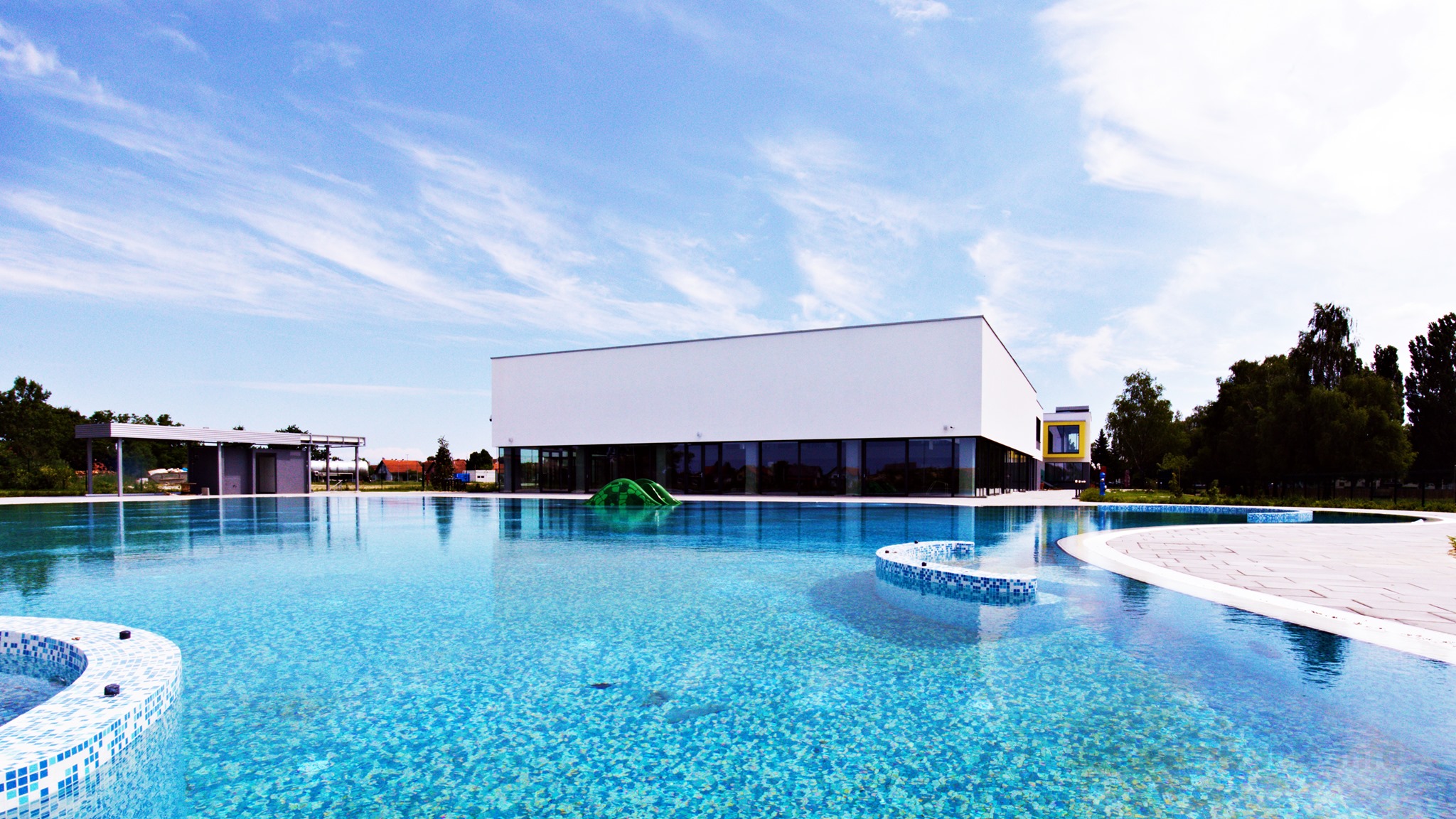
- Health tourism is an important link in the tourism of our county, and Naftalan is certainly a diver in terms of capacity, significant investments and the tradition that the spa has. The key social challenges for the development of health tourism are the growth of costs of the EU health system, prevention and new forms of treatment and personalized medicine, demographic changes through constant aging and the need for a healthier lifestyle. Zagreb County is also recognized as the fastest-growing health tourism destination in the European Union and is considered a high-income industry that then vertically binds and strengthens many other segments important for the accelerated development of the entire region, points out the director of the Zagreb County Tourist Board Ivana Alilovic.
In addition to the dermatology offer, there are also 4 specialists working in the Department for Physical Therapy and Rehabilitation, with programmes for inflammatory rheumatic diseases, post-traumatic and post-operative care, and degenerative changes of joints and spine and vertebrogenic pain syndromes.
There are also 27 physiotherapists working on a range of modern physical therapies - combined with electrotherapy, kinetic therapy, massage, hydrotherapy with underwater massage and a pool with running thermal mineral water, accompanied by naphthalene therapy with electronically conducted process of regeneration and sterilisation of naphthalene.
The gyms are equipped with exercise machines, tubs for underwater massage, a space for naphthalene therapy with 24 tubs, a pool with thermal water, machines for thermotherapy (therapy with paraffin, naphthalene and camphor) and criotherapy, a room for massage, a cosmetic salon, a wellness zone with saunas, a whirlpool and a laconium.
An excellent addition to Croatia's medical tourism story, and one which owes its thanks to a camel all those years ago. One wonders how quickly the camel would have recuperated in Ivanic Grad...
You can learn more about the unique Naftalan offer on the official website.
To learn more about what is on offer with health tourism in Croatia, check out the Total Croatia Health Tourism in a Page guide.
Discovering Authentic Croatia's Secrets With Seoski Tourism
November 4, 2021 – Village tourism or countryside tourism - Seoski tourism in Croatia - offers authentic, traditional experiences. Aleksandra Kuratko, secretary of Udruga ruralnog turizma Hrvatske (Croatian Rural Tourism Association) tells us more about it, and their work to help facilitate it
Croatia's visitor offer is evolving and expanding. There are exciting aspects of authentic Croatia to be discovered. Away from the beach, villages inland often look remarkably similar to how they did one hundred years ago. There, crops are grown and produce made in ways passed down through generations of families. And, in some lucky instances, these family farmers are willing to open their doors, invite you inside and show you how they live.
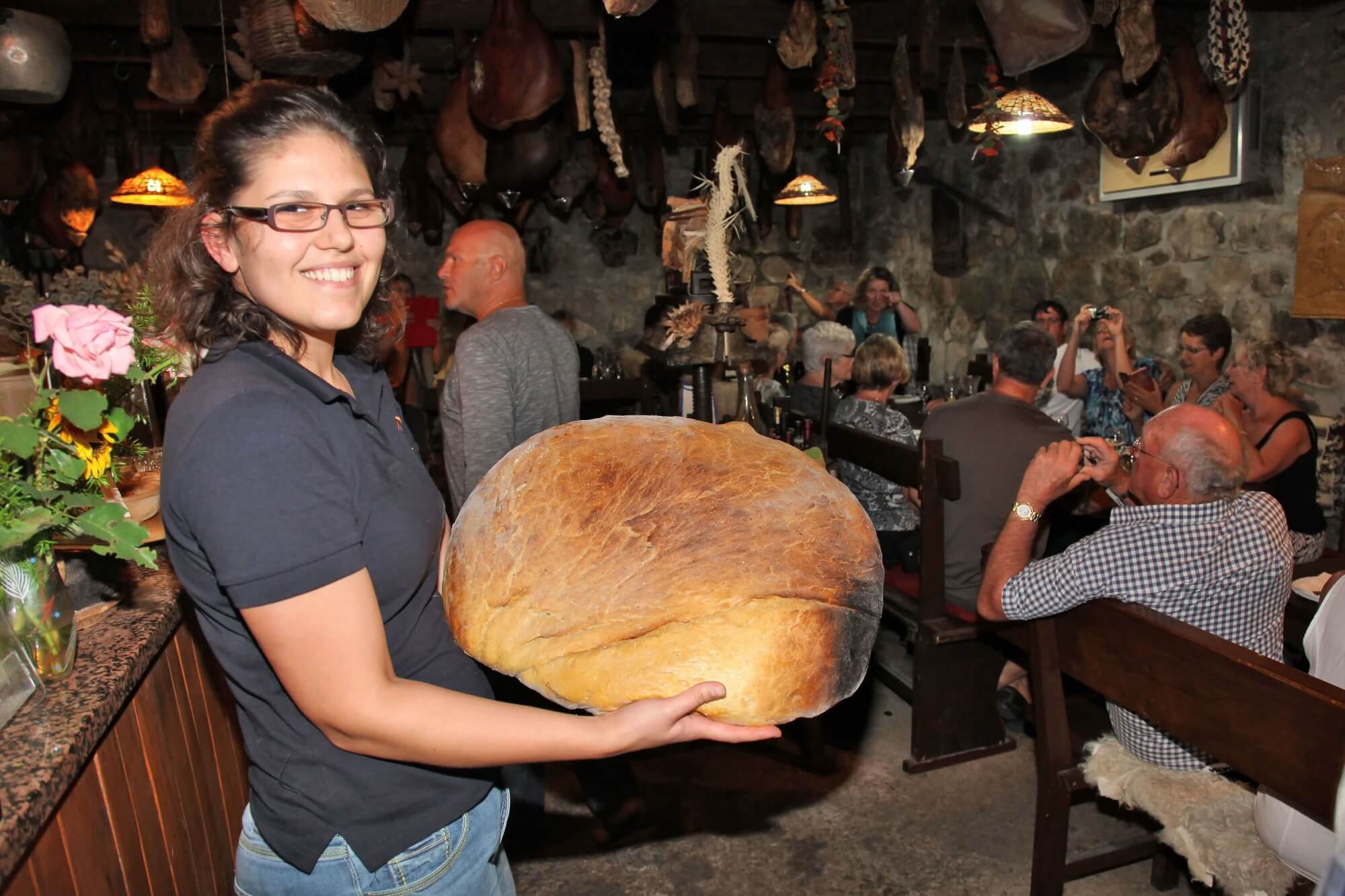 Bread from the peka at Agroturizam Antunović on Pelješac
Bread from the peka at Agroturizam Antunović on Pelješac
Seoski Tourism – translated as either village tourism or countryside tourism – is just that. Family farms that offer hospitality. These are some of the most homely and most welcoming accommodation experiences you can have in Croatia. Offering sights and sounds, tastes and flavours that you can't find anywhere else, visits or stays in Seoski Tourism places have long been loved by locals for weekend breaks or holidays outside peak summer. But, increasingly, these authentic Croatia experiences are being discovered by international visitors.
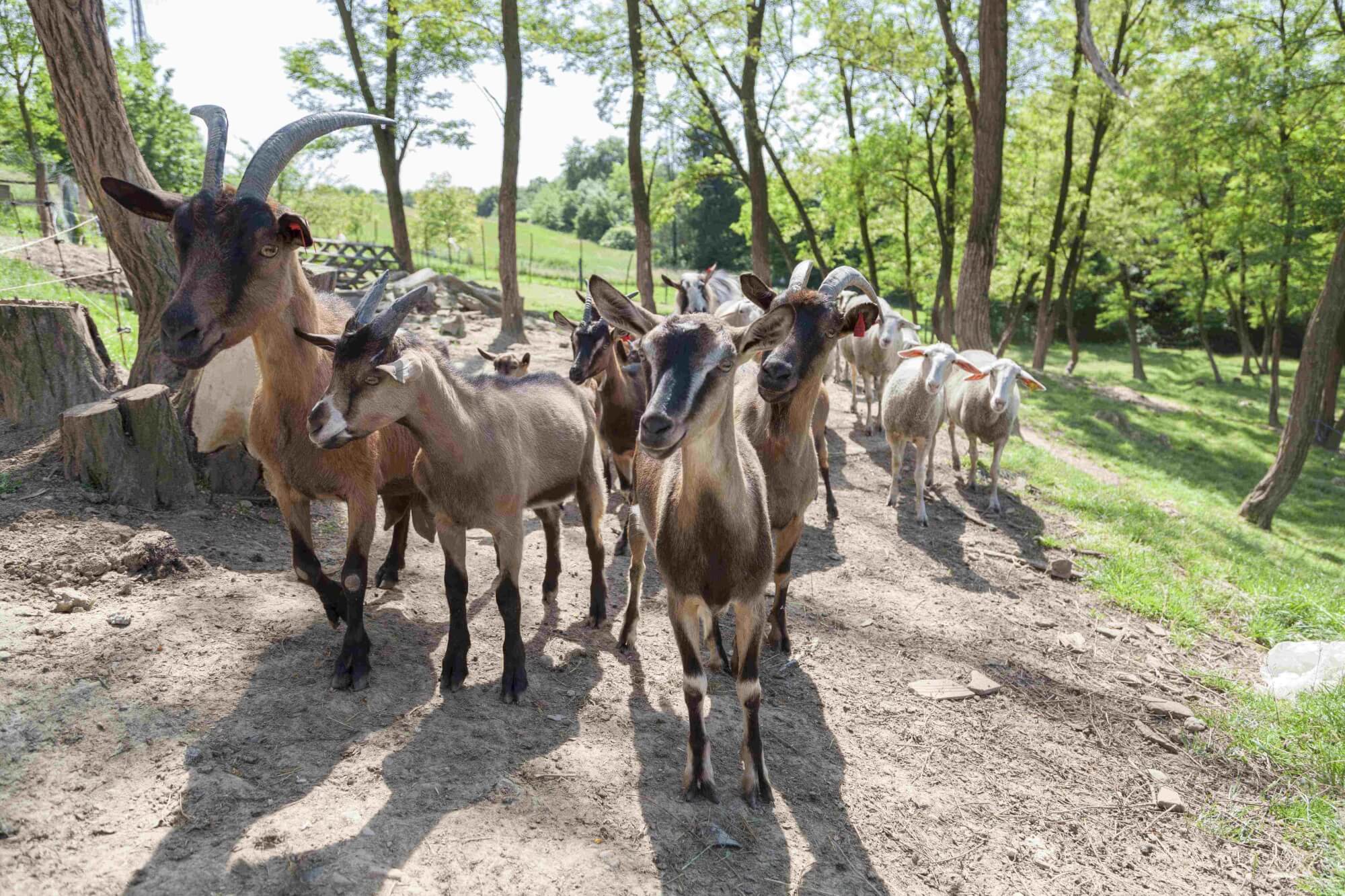 Moslavina goats at Kezele family farm © Davor Konjikušić
Moslavina goats at Kezele family farm © Davor Konjikušić
One institution trying to facilitate the growth in interest is Udruga ruralnog turizma Hrvatske - Croatian Rural Tourism Association. Since it was formed in 2016, they have tried to bring together Croatia's family farm hosts, to promote them and educate them, and to build bridges between these independents and tourist boards, tourist agencies, educators and even the wider world outside Croatia.
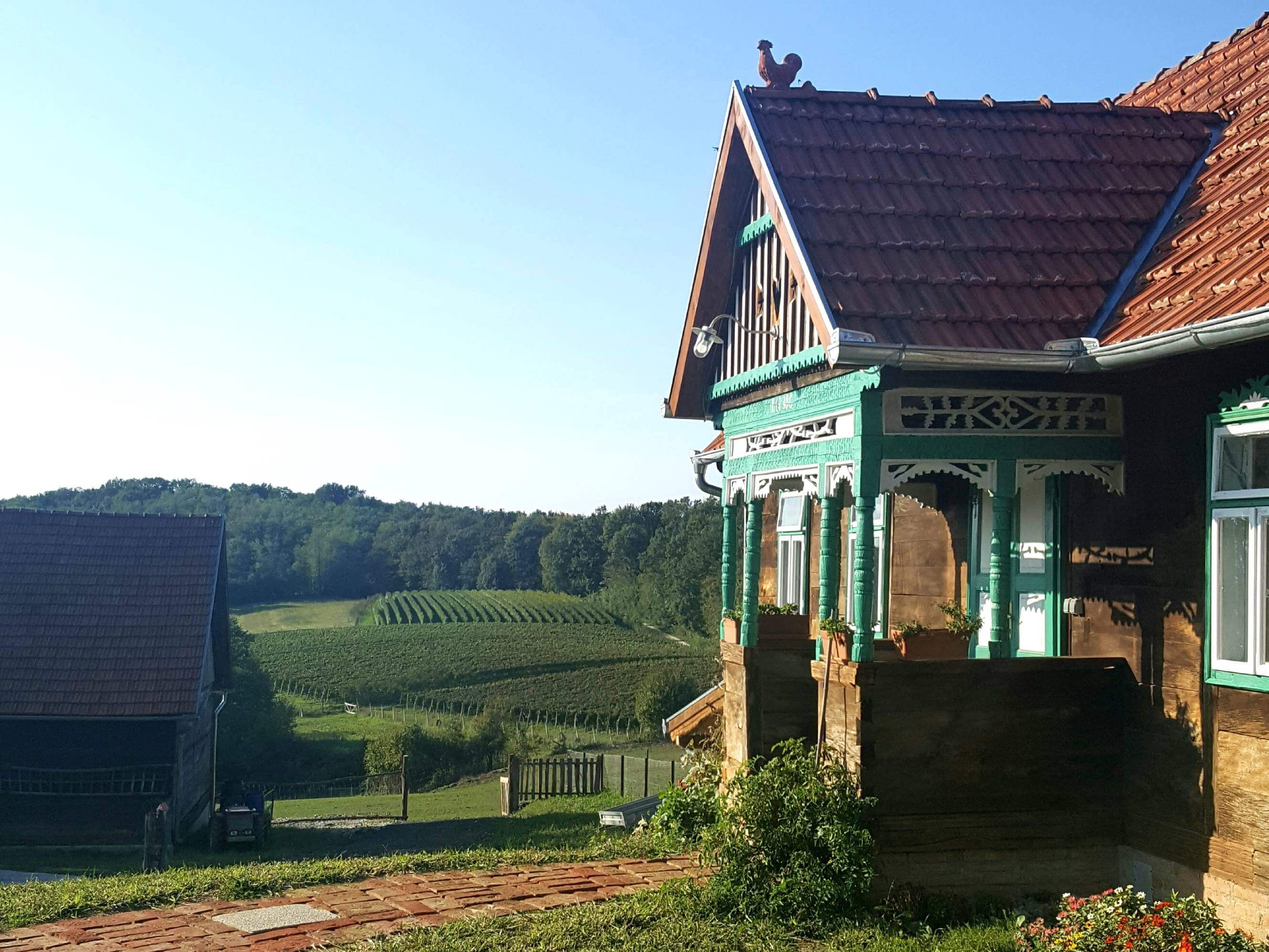 Seoski turizam Kezele in Šumećani, on the border of Zagreb County and Bjelovar Bilogora County © Davor Konjikušić
Seoski turizam Kezele in Šumećani, on the border of Zagreb County and Bjelovar Bilogora County © Davor Konjikušić
Based in Ivanić-Grad, Zagreb County, the Croatian Rural Tourism Association is currently touring the length and breadth of the country, holding workshops with as many Seoski Tourism family farms that will come. And if the farmwork doesn't allow them free time, then they can attend Croatian Rural Tourism Association workshops online.
On the eve of the association's online Seoski Tourism workshops for Central Croatia and Slavonia, TCN interviewed Aleksandra Kuratko, secretary of Udruga ruralnog turizma Hrvatske, to find out more about Seoski Tourism in Croatia.
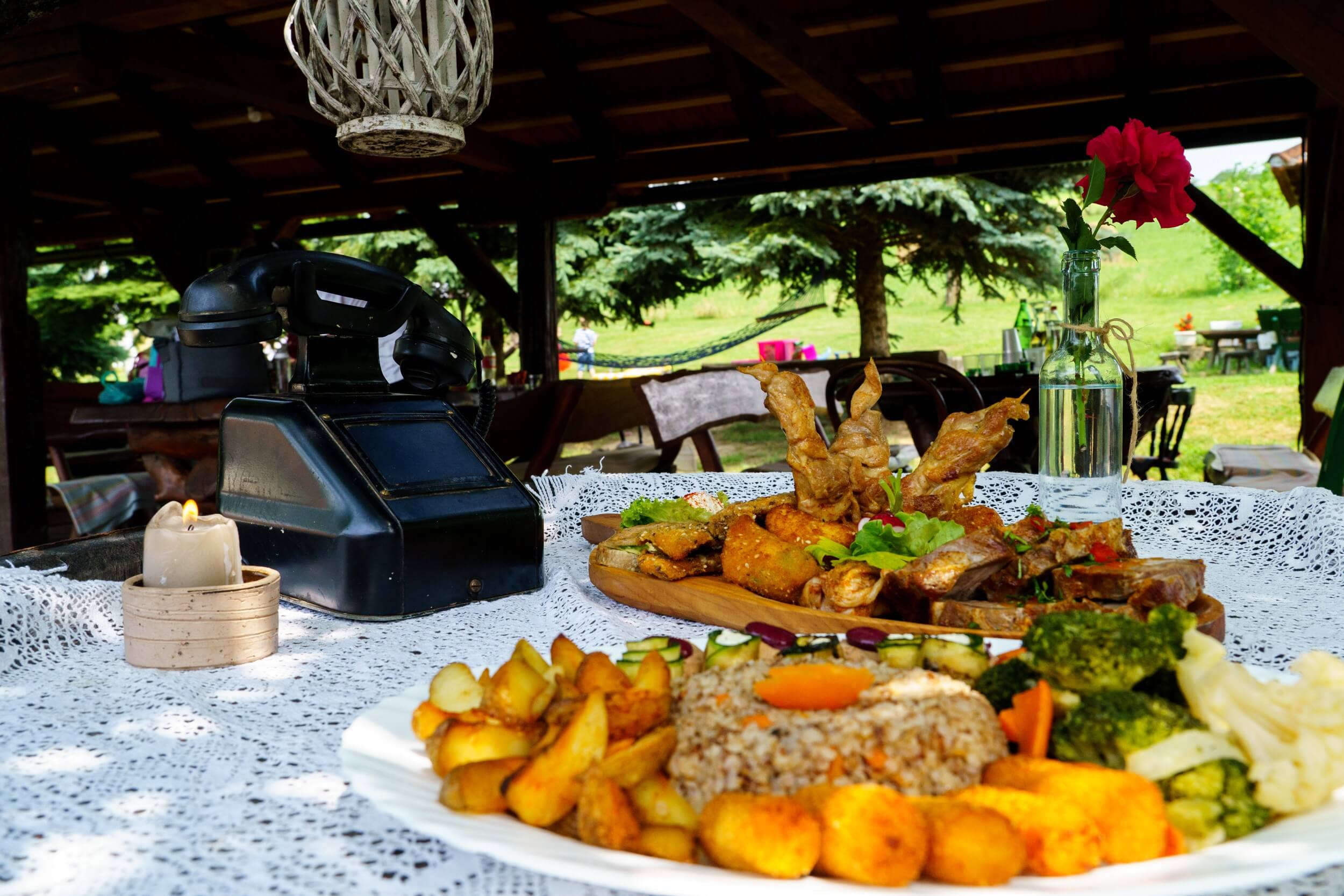 Prigorje specialties at Rakić family farm
Prigorje specialties at Rakić family farm
My name is Aleksandra Kuratko and I am secretary of Udruga ruralnog turizma Hrvatske. As an association, we are 5 years old.
We have 35 members, most of whom are service providers in what we call Seoski Tourism. We also have several tourist boards and two educational institutions as members.
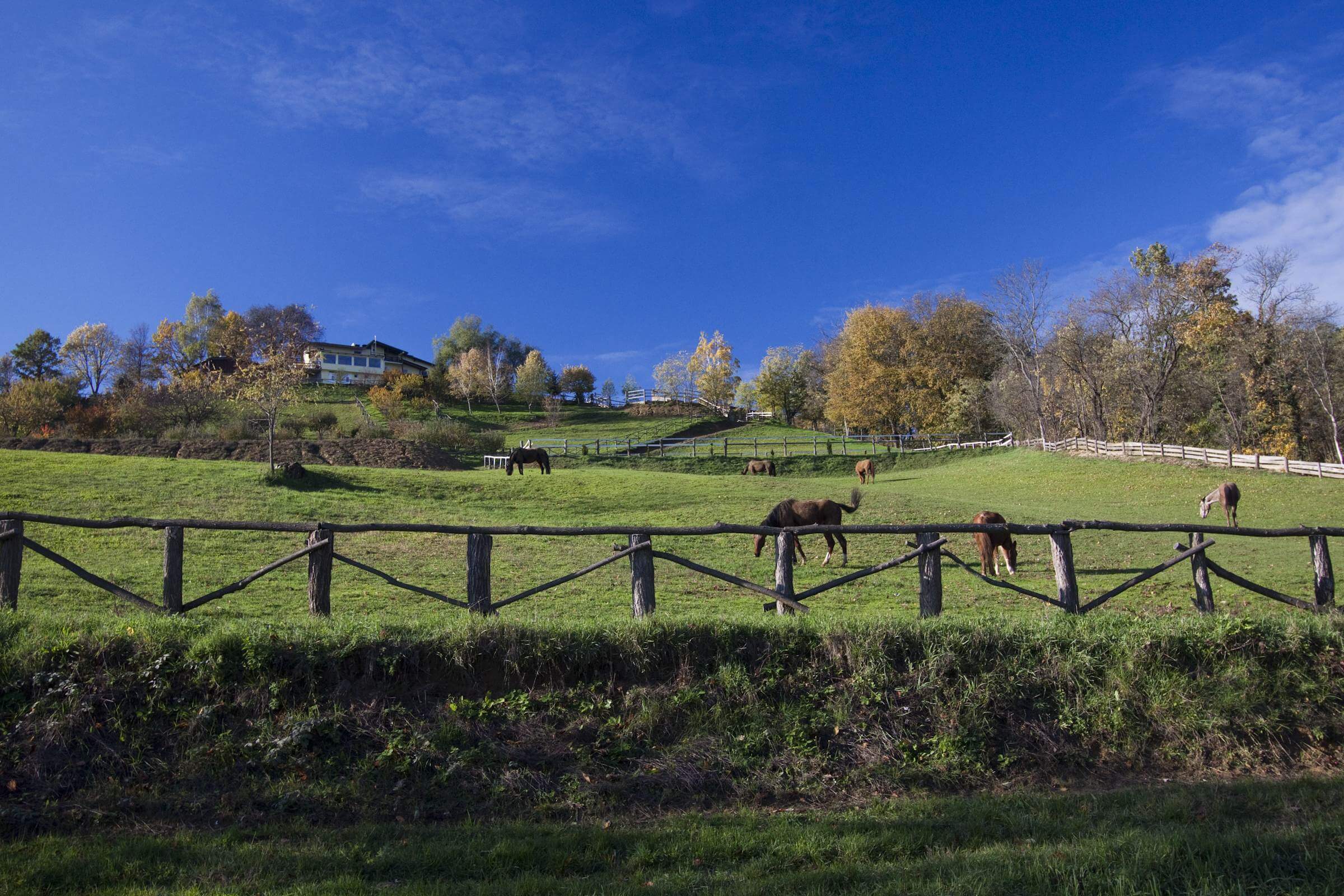 Bilogora horses in autumn at Agroturizam Na malenom brijegu © Vladimir Vlajinić
Bilogora horses in autumn at Agroturizam Na malenom brijegu © Vladimir Vlajinić
Seoski tourism is not quite the same as rural tourism, because rural tourism is many different types of tourism that happen in rural areas. Seoski tourism - which you might translate as village tourism - is quite specific. We assemble people who work in agriculture and who, at the same time, are also offering hospitality. In English, you might call them Farm Stays. Or Agro-tourism – a merging of agriculture and tourism.
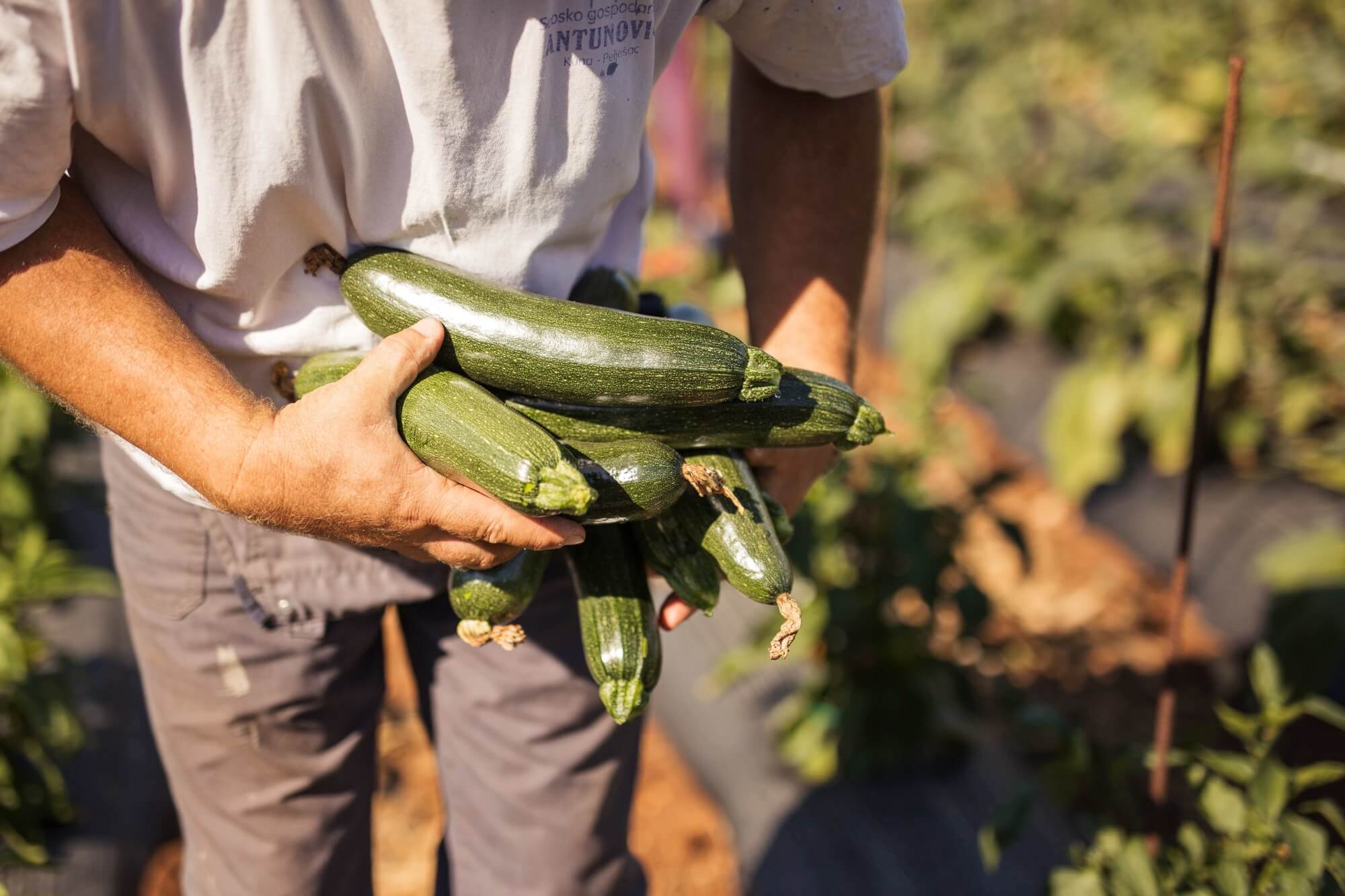 Fresh vegetables at Agroturizam Antunović on Pelješac
Fresh vegetables at Agroturizam Antunović on Pelješac
People who work on agricultural estates often take care of local cultural heritage. For example, they might maintain and renew traditional wooden or stone houses. Many also have etno collections, in which they preserve different objects from their region. Some of these objects might have been used in agriculture and households hundreds of years ago. So, they are preserving the cultural heritage of Croatian villages. This is what we call material cultural heritage. But, there's another kind.
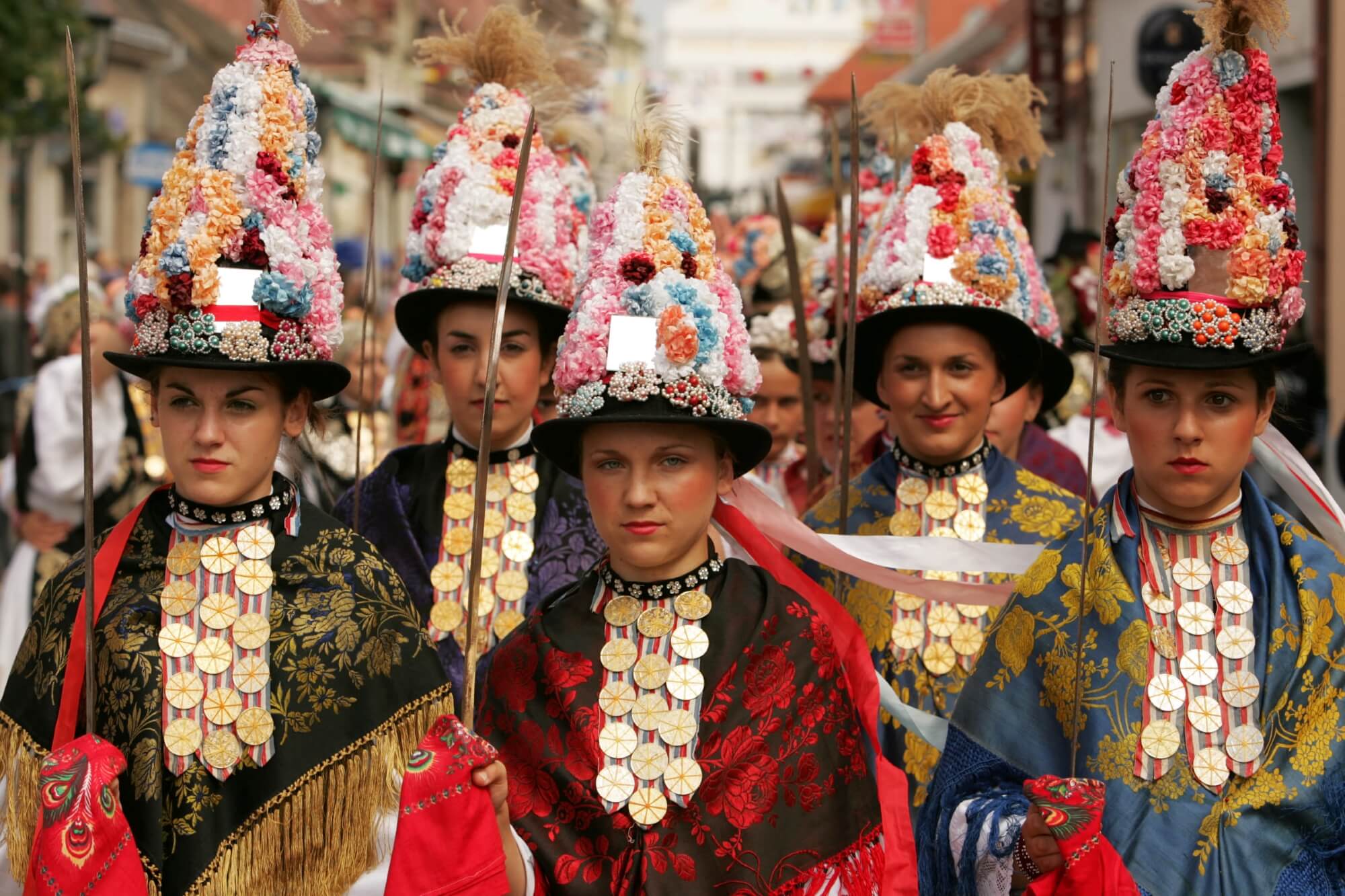 Cultural heritage preserved in one Slavonian village © Mario Romulić
Cultural heritage preserved in one Slavonian village © Mario Romulić
Non-material cultural heritage is also a part. That might be preserving old recipes of traditional, regionally-specific dishes. Or, it might be showcasing the songs and dance of local music.
We are currently running a project which is supported by the Croatian Ministry of Tourism and Sports in which we hold 37 Seoski Tourism workshops in the field all over Croatia. There will also be around 15 online workshops. The workshops are aimed at colleagues who currently operate in Seoski Tourism – they work in agriculture and offer hospitality. Also invited are local tourist boards and local action groups.
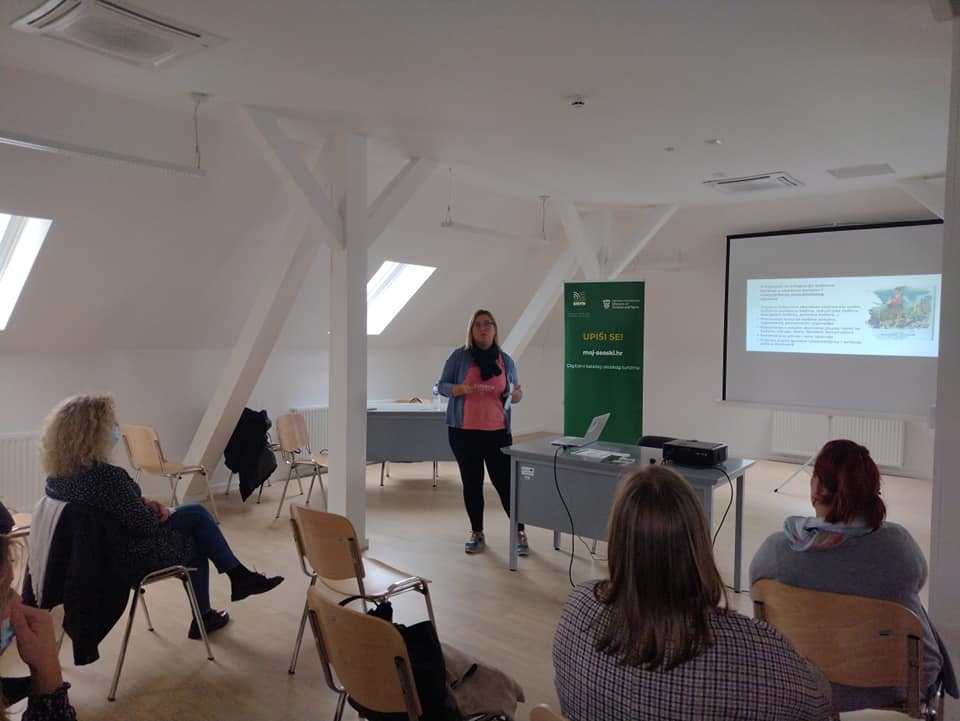 Photo from URTH workshop in Slatina
Photo from URTH workshop in Slatina
So far, we conducted 20 workshops in the regions of Central Croatia, Slavonia and Baranja, and Podunavlje. From next week until the end of the year, we will conduct the workshops in Istria, Kvarner, Lika and Dalmatia. Some service providers were not able to attend earlier workshops, because of work commitments of Covid. So, we decided to also offer access to the workshops online. Tomorrow is our first online workshop for Central Croatia and on Friday it's the online workshop for Slavonia.
These workshops are interactive discussions between our association, service providers and all other stakeholders. We discuss the legislative framework, which can be extremely complex. We talk about new trends in tourism for the post-pandemic era. We also discuss the importance of integrating cultural heritage in digital promotion.
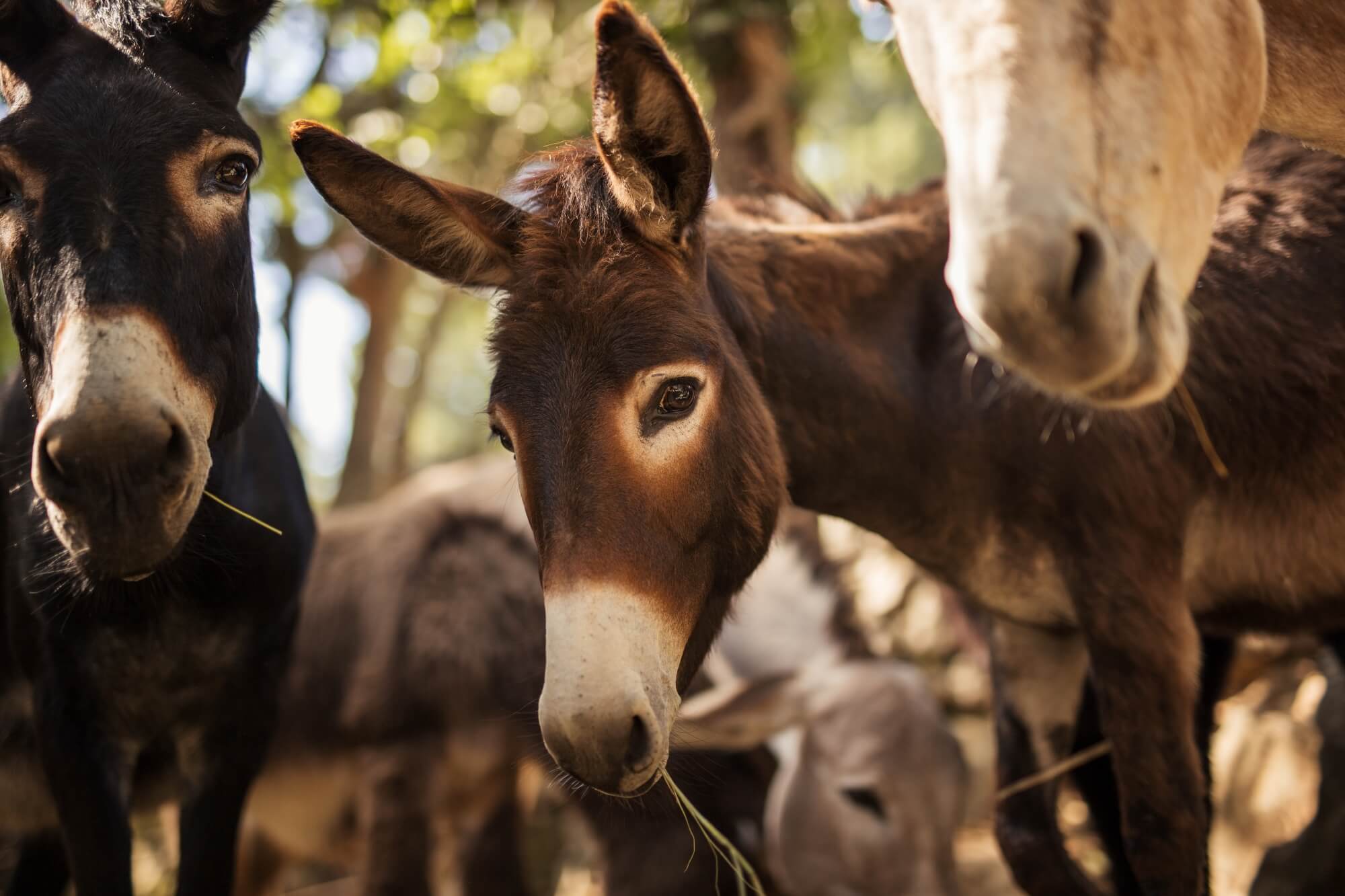 Donkey farm at Agroturizam Antunović on Pelješac
Donkey farm at Agroturizam Antunović on Pelješac
For the legislative framework, we have initiated the formation of a working group for the development of Seoski Tourism, which is now operating in the Croatian Ministry of Tourism and Sports. So, at the workshops, we ask if anyone is having issues. We collect the responses and address them in the working group.
Part of the workshop is the presentation of a new web application of Seoski Tourism, which we have developed with Croatian Ministry of Tourism and Sports. It has two purposes. One is to create a digital catalogue of Croatian Seoski Tourism. You can see region by region some of the Seoski Tourism options – currently around 40, those who have already enrolled.
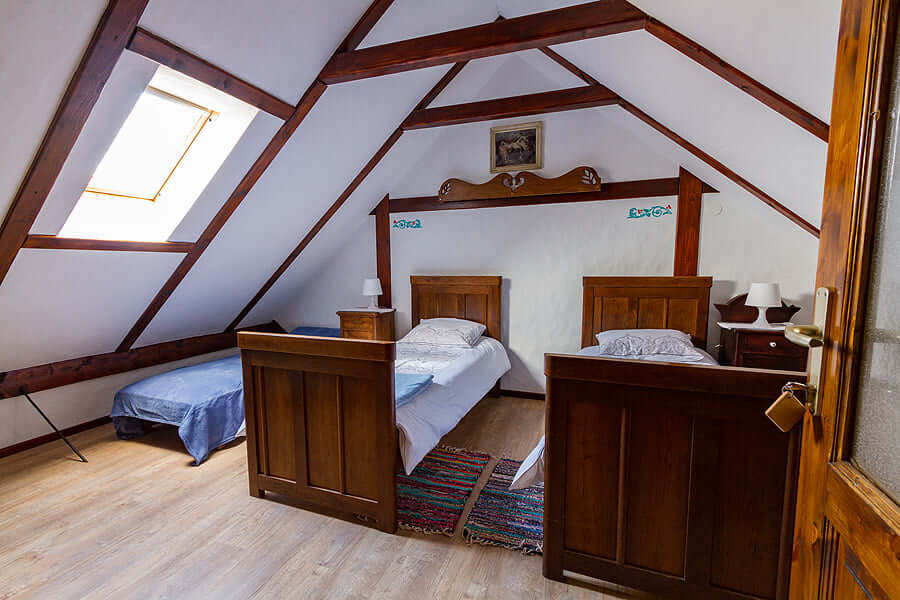 Podravina Etno rooms at Zlatni klas Otrovanec
Podravina Etno rooms at Zlatni klas Otrovanec
A version of the app is currently available on the website of the National Tourist Board. But, they are building a new website. The forthcoming version of the catalogue will likely be more user-friendly with many more functions and options. On the new website, Croatia's Seoski Tourism options will be detailed in many different languages. It should be a great resource not only for tourists but for travel agencies, journalists like you and for educational institutions. That's the reason we are devoting time in our workshops to encourage Seoski Tourism providers to enroll. We are just at the beginning of the process.
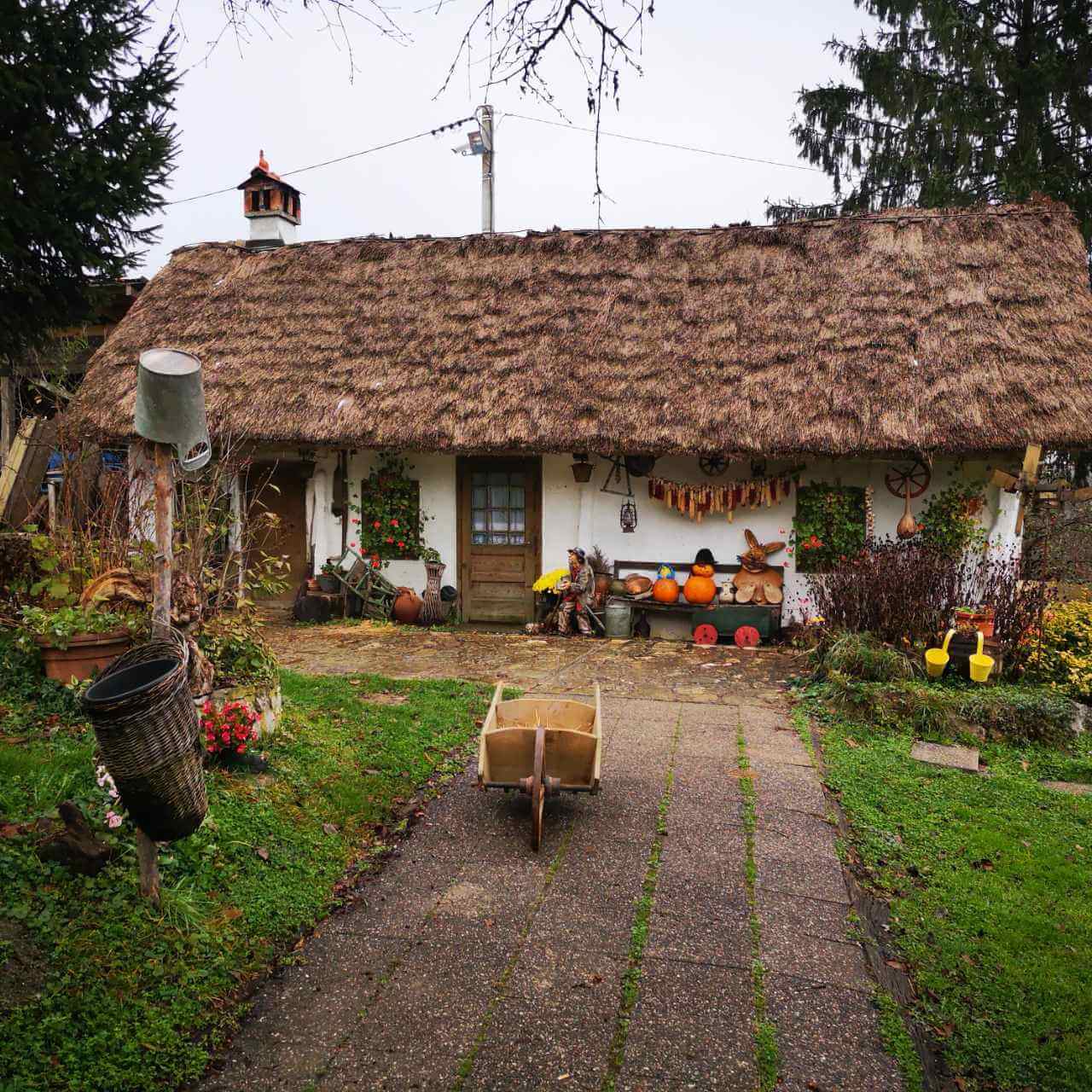 Grešna pilnica in Zagorje © Jasna Podboj
Grešna pilnica in Zagorje © Jasna Podboj
The second purpose of the app is to collect information about the service providers. This info will be used by our working group when defining a Croatian model of Seoski Tourism. So far, we have taken examples from Slovenia, Italy and other countries that are successful with Seoski Tourism. But, these models were entered into our legislative system without fully considering our distinct business and cultural environments. That is now about to change.
We are very happy that, following many years of partially successful advocacy, there is now political will at a ministerial level to really shape things up, to change the laws and regulations in order to facilitate Seoski Tourism. We want to encourage more Seoski Tourism, not to have people from agriculture being turned away because of the difficulty of the process and bureaucracy.
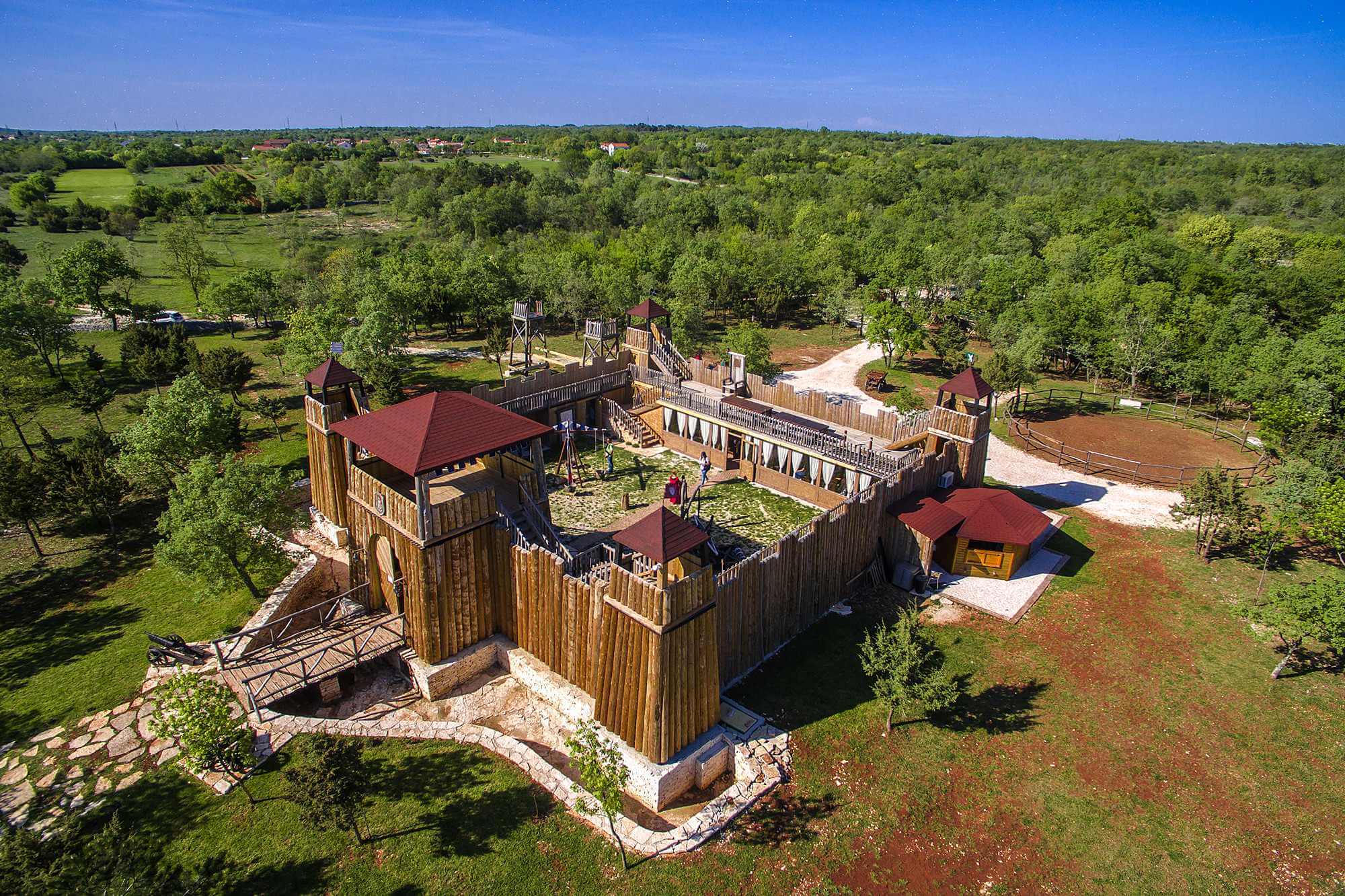 Medieval Theme Park San Michael © Silvia Otočan
Medieval Theme Park San Michael © Silvia Otočan
You said part of the workshops will focus on new trends. What are some of these?
Research has been done by a working group that is developing a new tourism strategy for Croatia. It's called Strategy for Sustainable Tourism to 2030. Under the auspices of this group, a number of research fields have been analysed.
The collected data shows that a huge percentage of tourists are now more inclined to eat locally grown and healthy food. They want to spend their time on estates that are run in accordance with ecological principles. So, they really care about issues like how waste is disposed of etc. They also pay a lot of attention to culture. They are curious to learn exactly how we are living, how we are working and how we produce things. They want to learn about our society and culture. And, importantly, they really care about how they spend their money. Above all, they want to spend money in areas that can help support local communities.
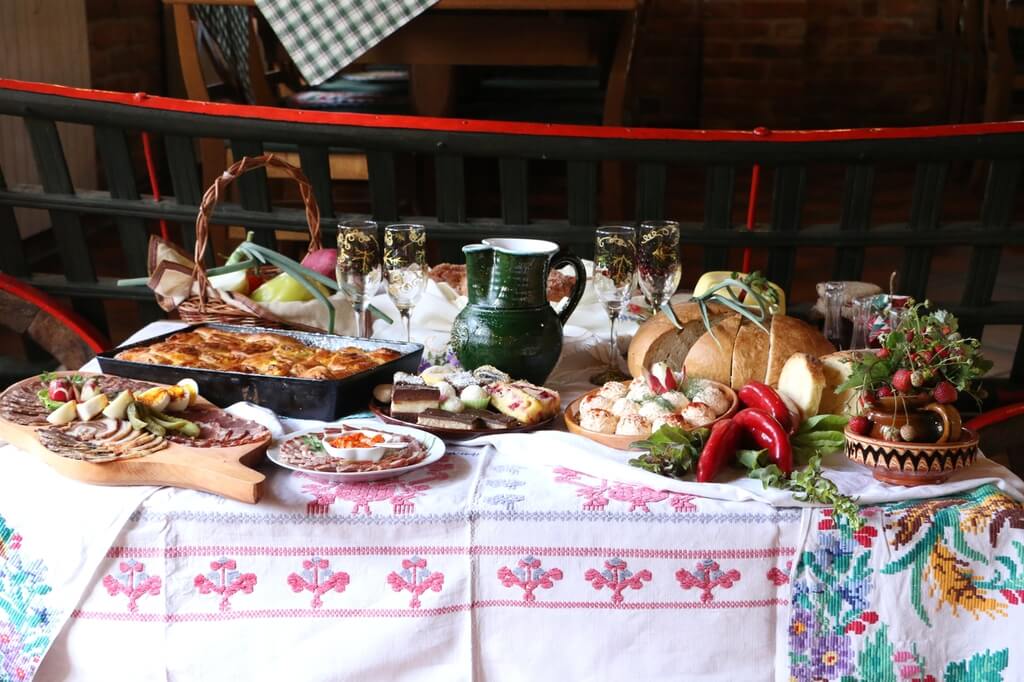 Prigorje Breakfast at Rakić Family Farm
Prigorje Breakfast at Rakić Family Farm
For us, this is really important. Because Seoski Tourism answers these demands to an incredibly high level. We do produce local, healthy food. Not only on the agricultural estates where you can experience Seoski Tourism, but also from their neighbours who just do agriculture. We are concerned with ecology, we protect cultural heritage and the money spent in Seoski Tourism stays in local communities, where it has very beneficial effects.
In the digital promotion part of the workshops we are trying to persuade people about the importance of their online presence. Basically, these days, if you're not online, it's almost like you don't exist. So, we try to explain the importance of having good-quality photos, short videos and a regular online presence.
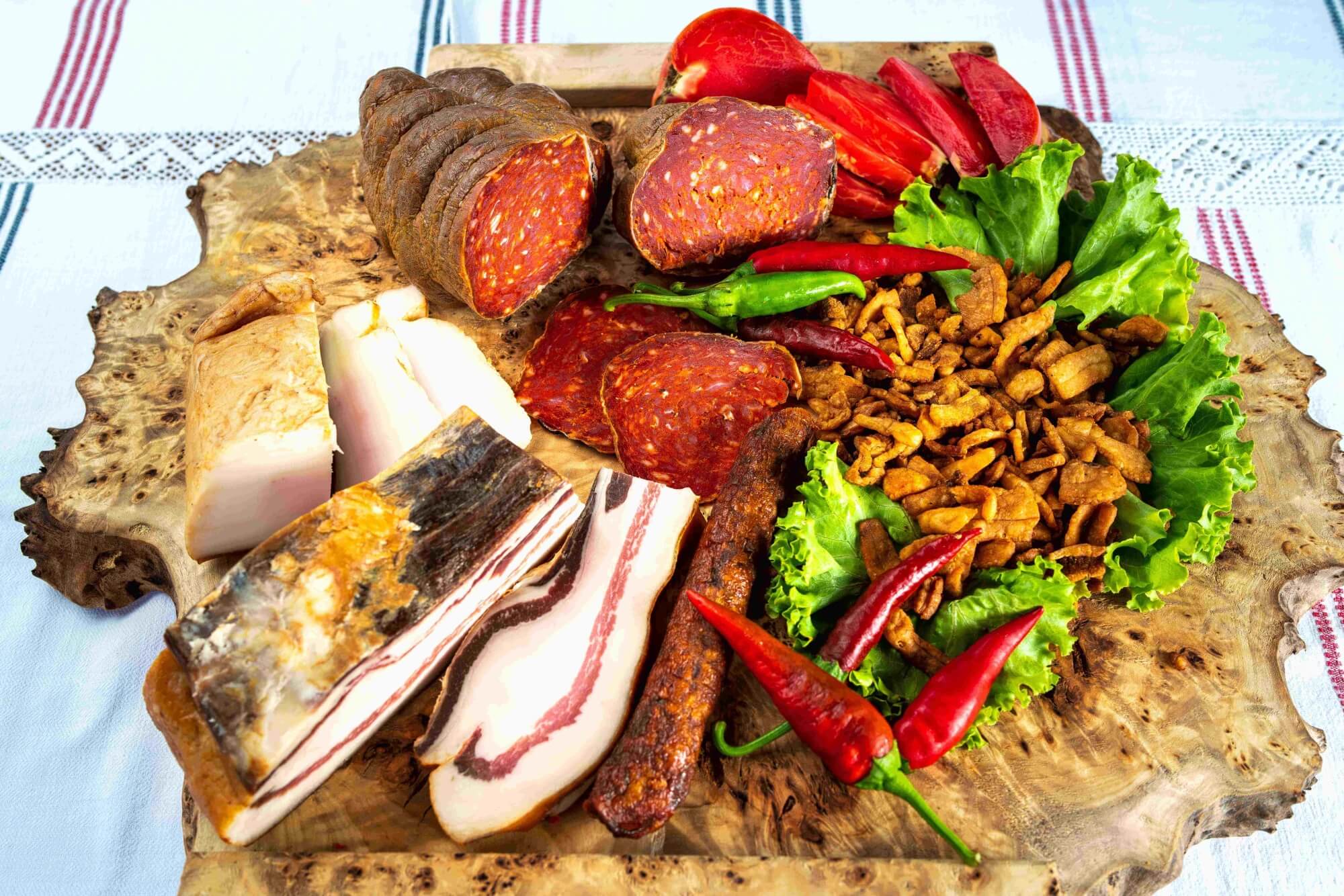 Kulen, čvarci and other specialties at Baranjska kuća © Denis Despot
Kulen, čvarci and other specialties at Baranjska kuća © Denis Despot
That's interesting. In some cases, it might be like two different worlds colliding - people who work in a traditional industry and a traditional environment having to adapt to a very modern way of operating. There's also another potential collision when providers learn of the expectations within modern tourism. Because these people can no longer just work in agriculture. To operate in Seoski Tourism, you're also very much expected to also be a host.
Yes. All of our current service providers who are successful within Seoski Tourism are also great hosts. It's essential. You can see it in almost all of the reviews for this kind of tourism. Guests come for the food and drinks and surroundings, yes. But, what they value the most, what they remember the most, is the host part of the experience. On the estates of Croatian Seoski Tourism, guests are welcomed like family. Across all of Croatian tourism we are expected to be good hosts. It's part of our reputation and the reason why many people come here from all over the world. In Seoski Tourism, it is vital we live up to those expectations.
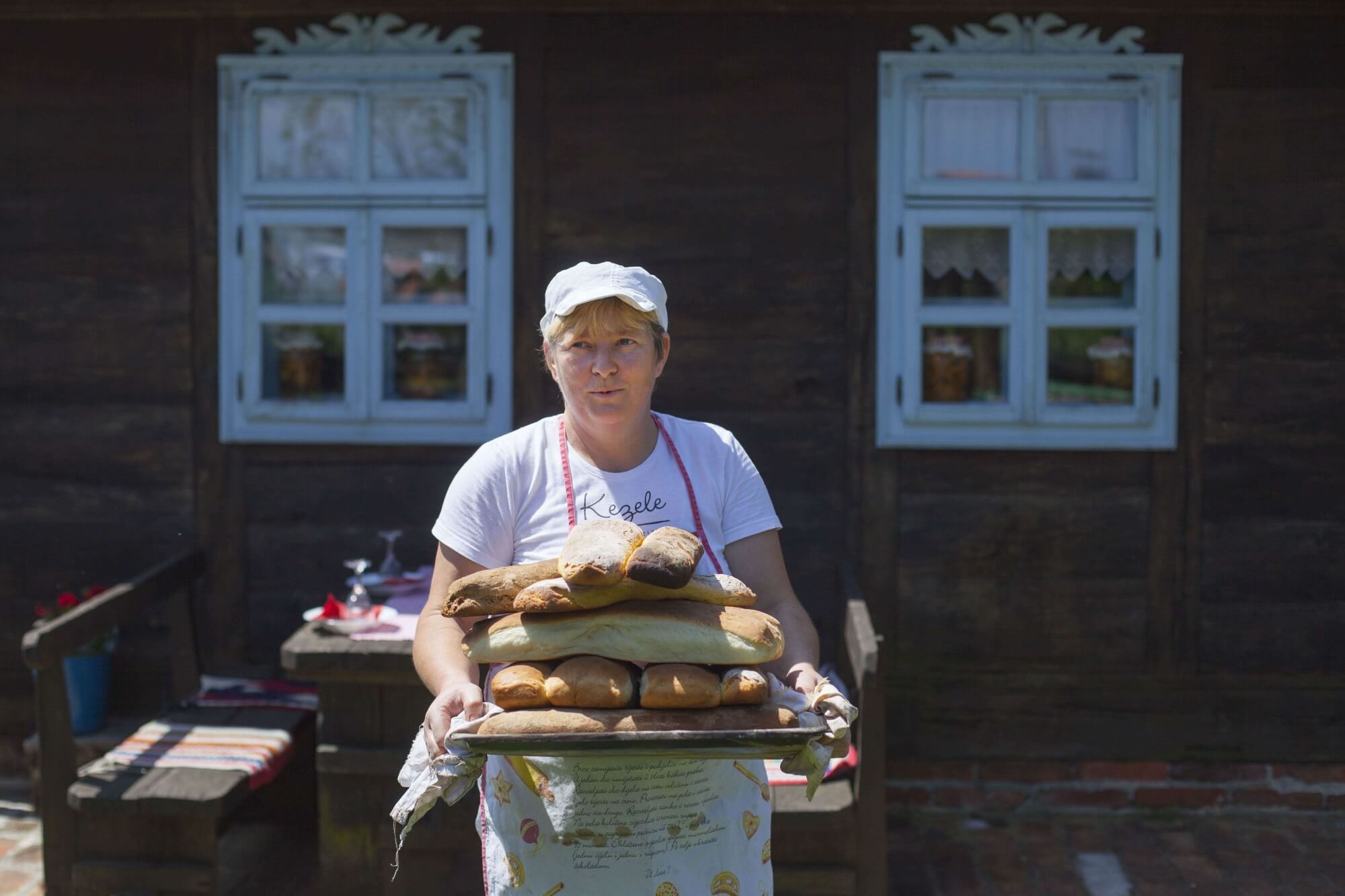 Kezele family farm © Davor Konjikušić
Kezele family farm © Davor Konjikušić
Another aspect of this, which is a more recently-observed element, is that visitors often want an insight into the actual lives, even the personalities of their hosts. They want not only to taste the homemade sausages you make, but they also want to know how you do it, where you do it, how you learned to do that. When they go to Spain, they want to know how the people there make their wine. And, when they come to Croatia, they want to learn how we do it here.
So, all in all, those of us in Seoski Tourism are really busy. We are in agriculture, yes, but we are also in tourism and we are also online. With this more recently-observed aspect, we will need to try and devote even more time to our hosting. It can be difficult to balance the demands on your time. But, in our workshops, we are trying to persuade people to talk more about themselves, their lives, their cultural heritage. And, if there isn't time to do everything themselves, then to involve different and often younger generations of the family. Sometimes within the hosting or alternatively just with the online promotion and presence.
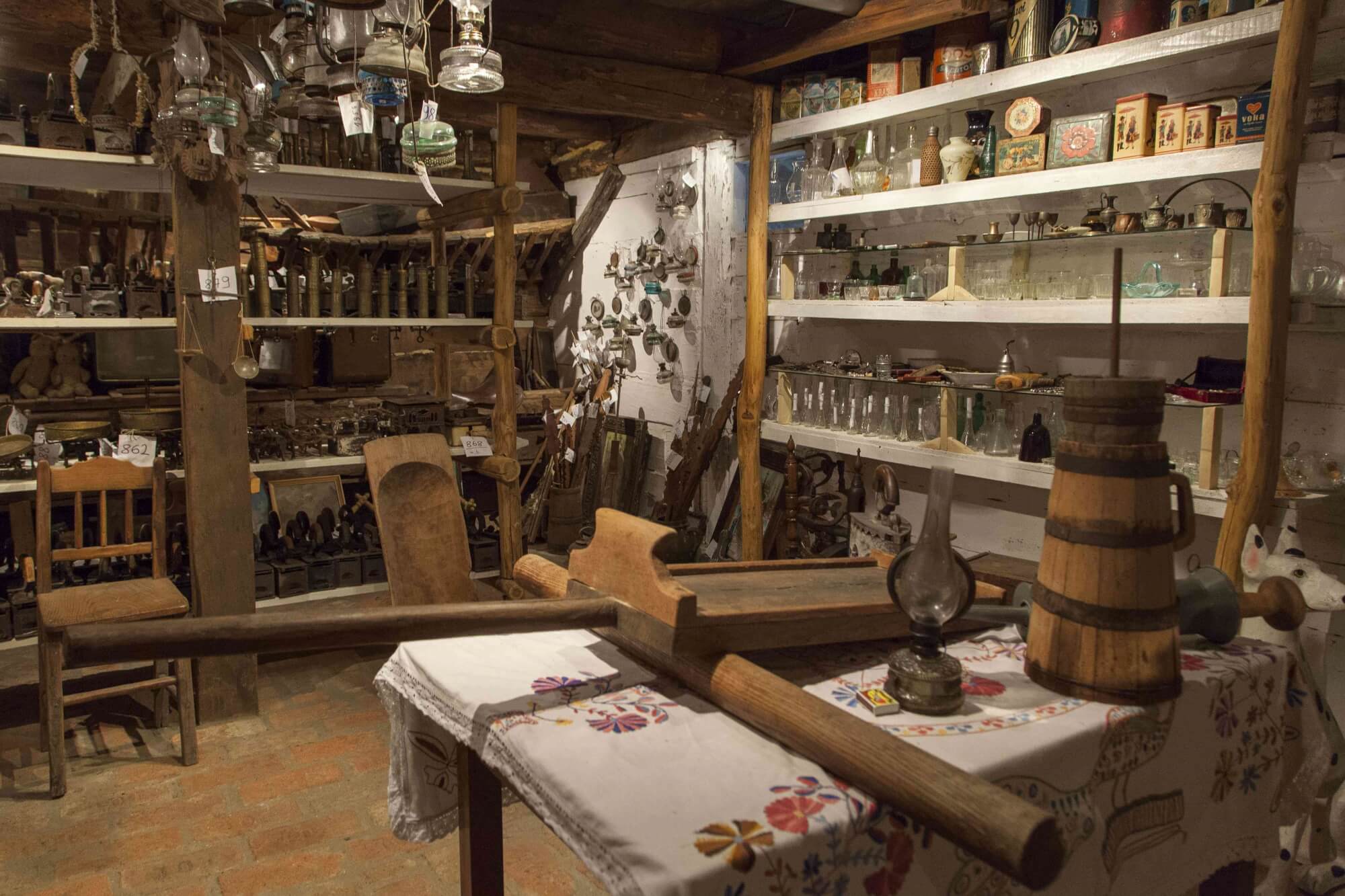 Kezele family farm ethno collection © Davor Konjikušić
Kezele family farm ethno collection © Davor Konjikušić
I've visited some family farms that were right at the start of their journey with Seoski Tourism and they seemed surprised that I was at all interested in what they do and how they do it. I think maybe they thought I was a bit crazy.
Yes, that is a response we sometimes also see at first. I think it's because our generation takes a lot of things for granted. We sometimes think that what we do is just what we do. We are not so good at showcasing it. “Why would I show someone how I make my cheese? I make my cheese like my grandmother used to make it” But, for those who open their doors to Seoski Tourism, inquiries about how they do what they do are only increasing. So, they seem to appreciate how we advise them in the workshops.
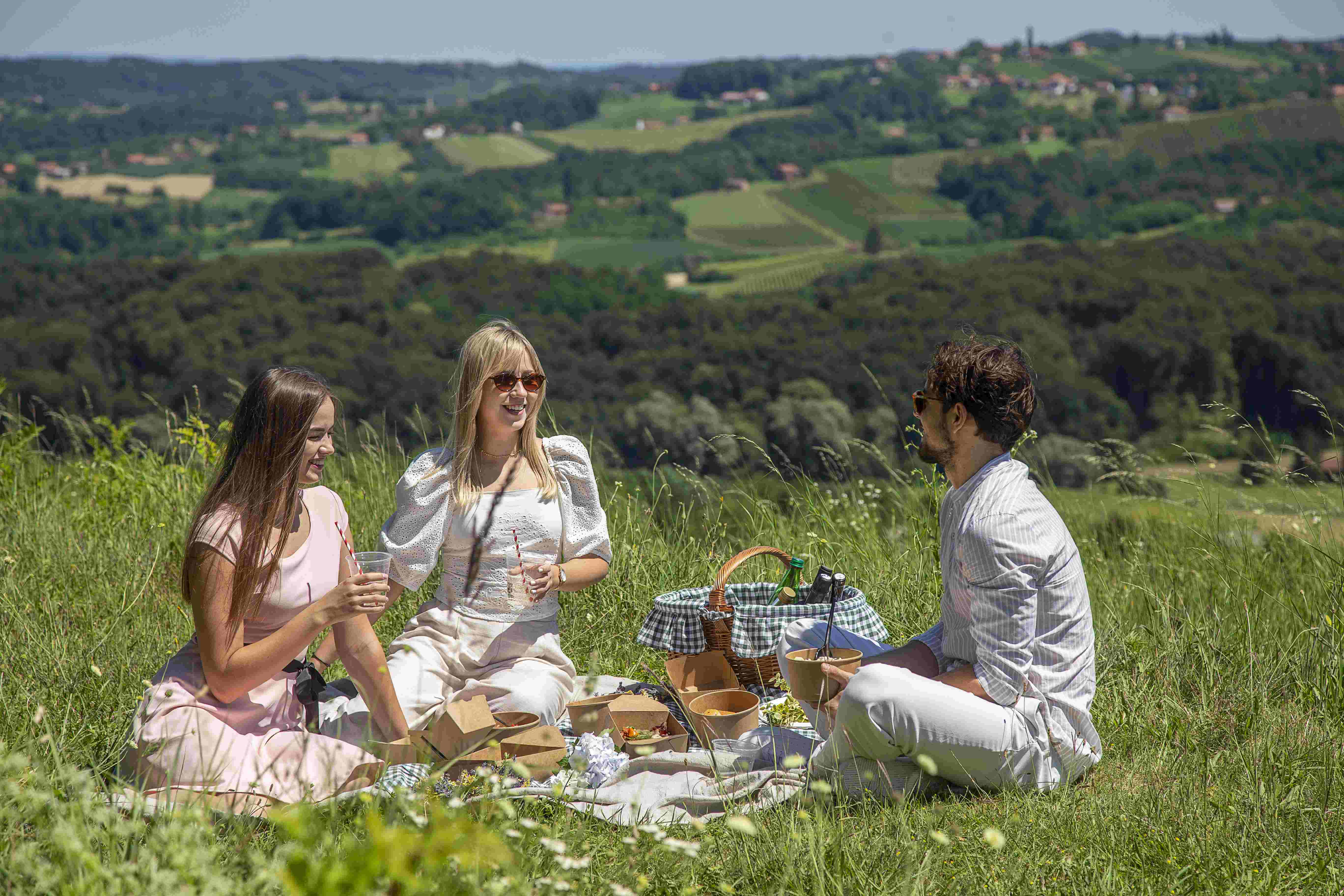 Picnic by Restaurant Međimurski dvori © Igor Nobilo
Picnic by Restaurant Međimurski dvori © Igor Nobilo
We are trying to let our producers know that Seoski Tourism is not just a platform to sell their produce and an overnight stay, but it's a full experience they can sell. There are agricultural farms in Austria that are established in tourism that you must pay only to visit. Of course, that doesn't happen currently anywhere in Croatia, even though some of our Seoski Tourism estates have sections that look like museums.
Some of these aspects are very new. And the feedback is great. I truly believe there are hidden treasures to be discovered in some Croatian villages. We are here to tell that story.
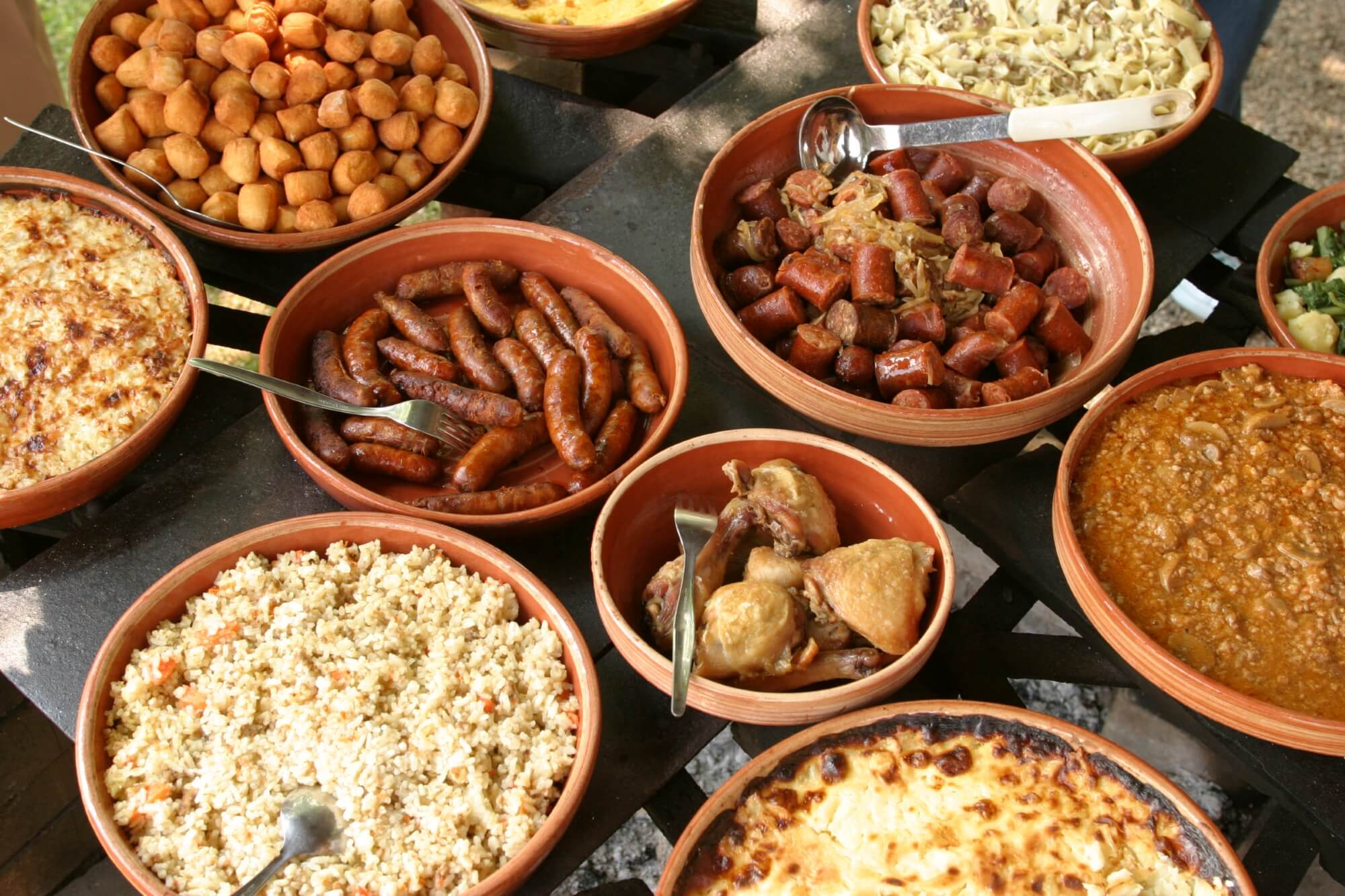 Selection of food from a Slavonian village © Mario Romulić
Selection of food from a Slavonian village © Mario Romulić
What is so rewarding about Croatian Seoski Tourism that international visitors would want to go to a traditional farm in some inland village instead of lying on the beach in Dalmatia for 14 days?
People come because they really want to see a different side of Croatia. And, there are many different aspects of Croatia to discover – not just Seoski Tourism, but also National Parks and Nature Parks. All of our current trends show us that more and more tourists are willing to come inland from the coast or to explore a different part of Croatia – inland Istria, for example, or continental Croatia.
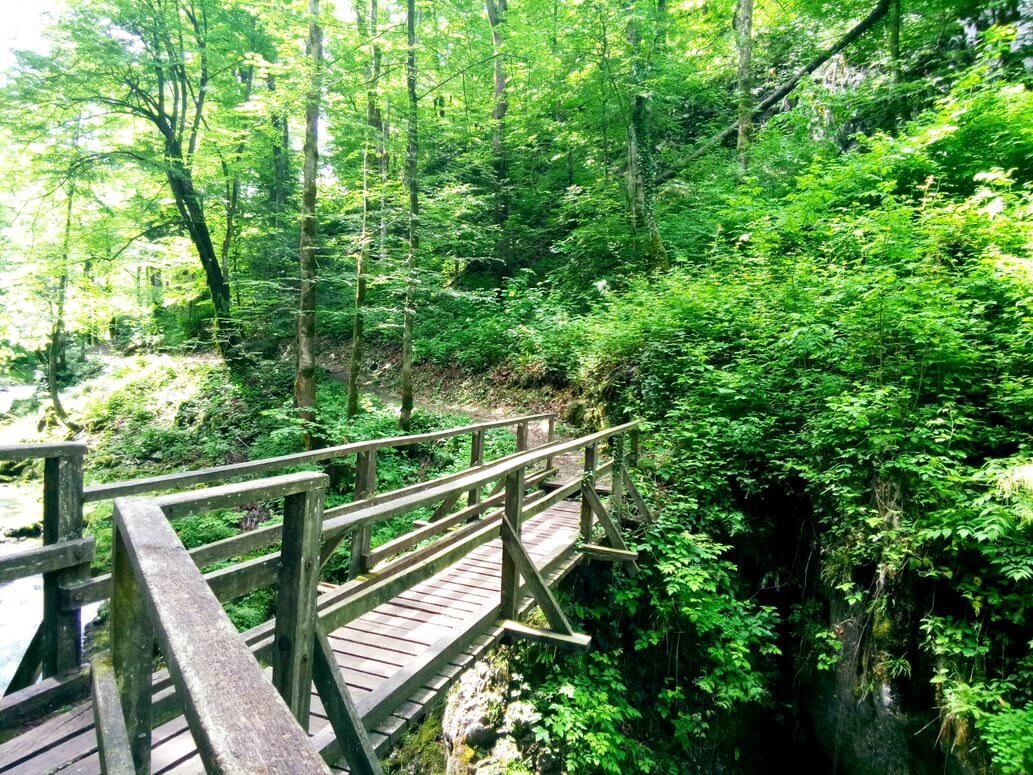 Kamačnik river canyon © Aleksandra Kuratko Pani
Kamačnik river canyon © Aleksandra Kuratko Pani
They really want to try authentic, local food. They want to eat healthy, to know what they are eating and how it is made. And, they want to experience flavours that are different from the usual ones they get from the supermarket.
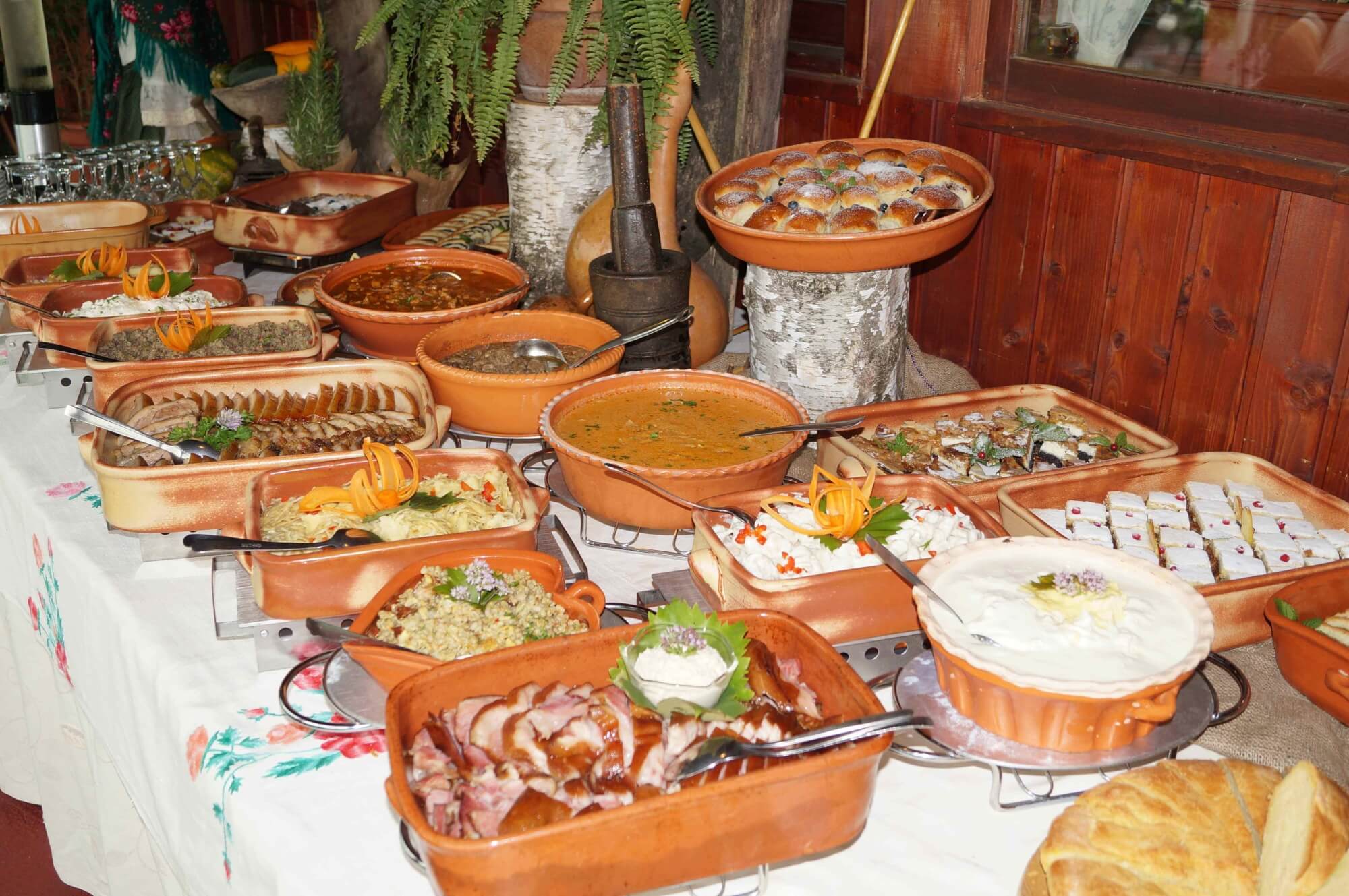 Traditional Međimurje table at Etno restaurant Međimurski dvori
Traditional Međimurje table at Etno restaurant Međimurski dvori
Also, I would say that with Seoski Tourism, people get to know better an authentic version of Croatia and its culture. It's a story we hear very often from our members. Some of them are visited by large groups from cruisers. These are people who might be on a cruise on the Adriatic and who journey inland for a day trip. Or, it might be a group who are cruising the Danube and disembark to visit a family farm in Slavonia, Baranja or Srijem.
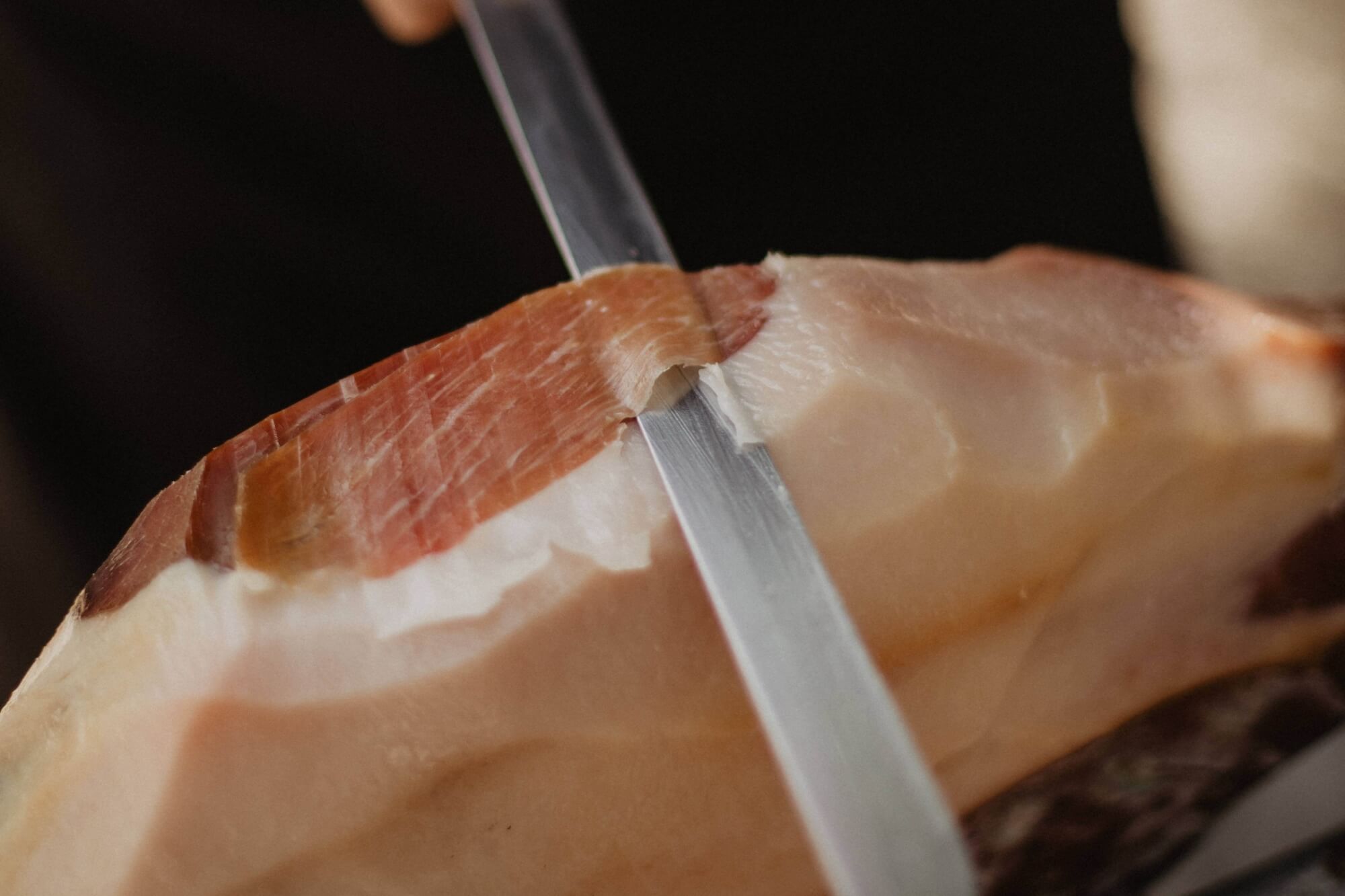 Prosciutto from Drniš at Agrotourism Kalpić © Ivana Kalpić
Prosciutto from Drniš at Agrotourism Kalpić © Ivana Kalpić
When they visit farming estates on day trips, it's very often a huge 'wow' moment for them. For many, in their minds, Croatia is simply sun and sea. And that's not entirely their fault. We, as a country, have done very little until now to promote alternative sides of Croatia. The visitors experience these wow moments because of the hospitality they receive and because of the tangible aspect of the visit. This is a modern aspect – people want to touch things, know how things feel, taste, smell. They want to ride on horses or feed them. Or take part in cultural activities. These parts of a visit to Seoski Tourism are very difficult to experience anywhere else.
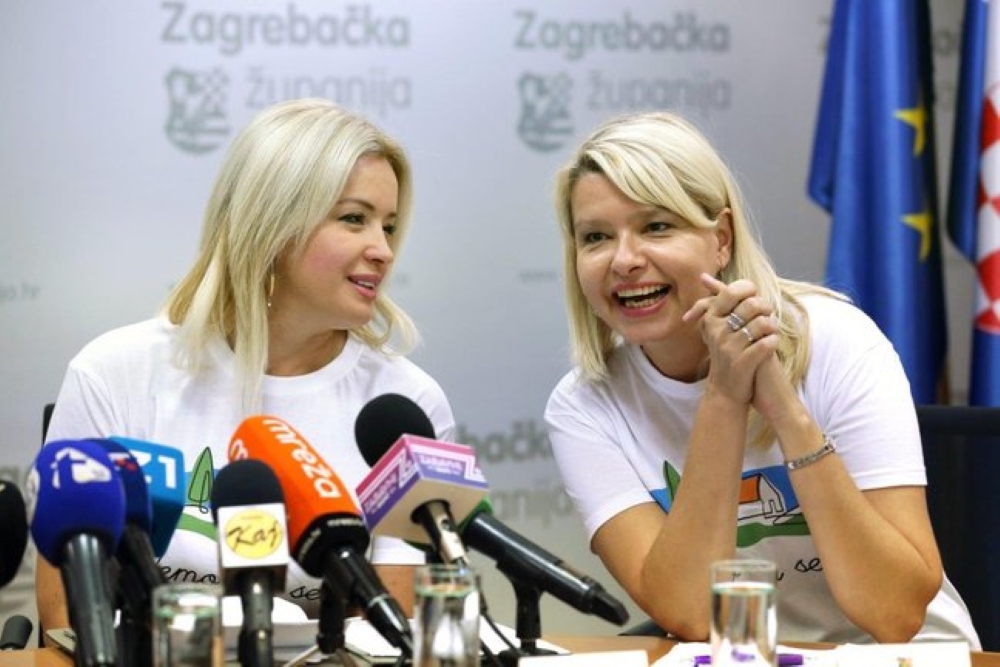 (left) Ivana Alilović, director of Zagreb County Tourist Board (right) Aleksandra Kuratko, secretary of Udruga ruralnog turizma Hrvatske (Croatian Rural Tourism Association) © Zagreb County
(left) Ivana Alilović, director of Zagreb County Tourist Board (right) Aleksandra Kuratko, secretary of Udruga ruralnog turizma Hrvatske (Croatian Rural Tourism Association) © Zagreb County
Udruga ruralnog turizma Hrvatske's online Seoski Tourism workshops begin today and their physical workshops continue next week in Istria.
If you'd like to read more about rural tourism in Croatia, then look here
Croatia Through the Eyes of a Digital Nomad: Fall Means its Bučijada Time!
October 4, 2021 - Americans say pumpkin, Croatians say bundeva. Americans eat pumpkin pie, Croatians eat bučnica. How a simple pumpkin festival reminded me to embrace cultural traditions and remember that finding what’s new and different is why we travel.
At a recent meetup for digital nomads in Zagreb, one of my colleagues mentioned the annual bučijada (pumpkin festival) starting the following day in Ivanić Grad, a town roughly 45 minutes outside of the capital. I squealed with delight. I love eating pumpkin in various forms and the pie (specifically, my mother’s creation) is one of my all-time favorite foods. Hers is the gold standard of pies everywhere, with its tasty filling, creamy texture, and moist crust. I look forward to this time of year for all kinds of pumpkin goodness, the only season when it’s available.
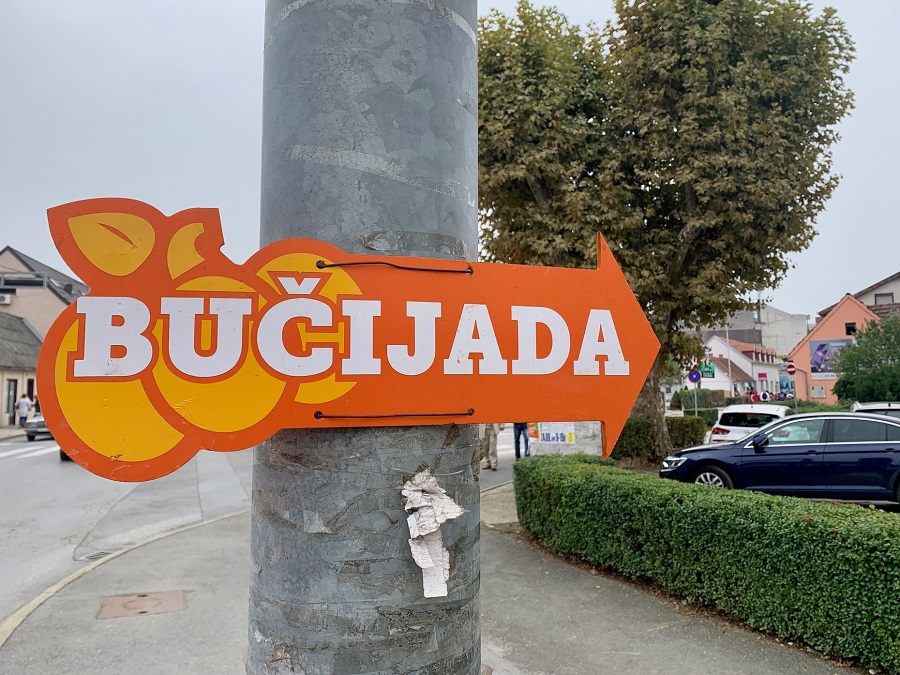
(The annual bučijada in Ivanić Grad, outside of Zagreb, is one of the town’s largest fall festivals.)
How fun would it be to sample Croatia’s versions of this fall favorite and pick up some new treats too?! What do they have here that’s different from what we have at home? As it turns out, quite a lot.
Consuming pumpkin
My stomach led as I walked off the train in Ivanić Grad the next morning. I met the wonderful Aleksandra, and asked where I could find pumpkin pie. “We don’t make that here,” she said. What about pumpkin bread, surely this bread-forward culture loads it into the bakeries? No again. Had I tasted bučnica? The savory pastry is a pumpkin strudel, popular in and around Zagreb, and made with pumpkin, fresh cheese, cream, and eggs wrapped in a thin dough. My first-ever serving there at the festival was pretty darn good.
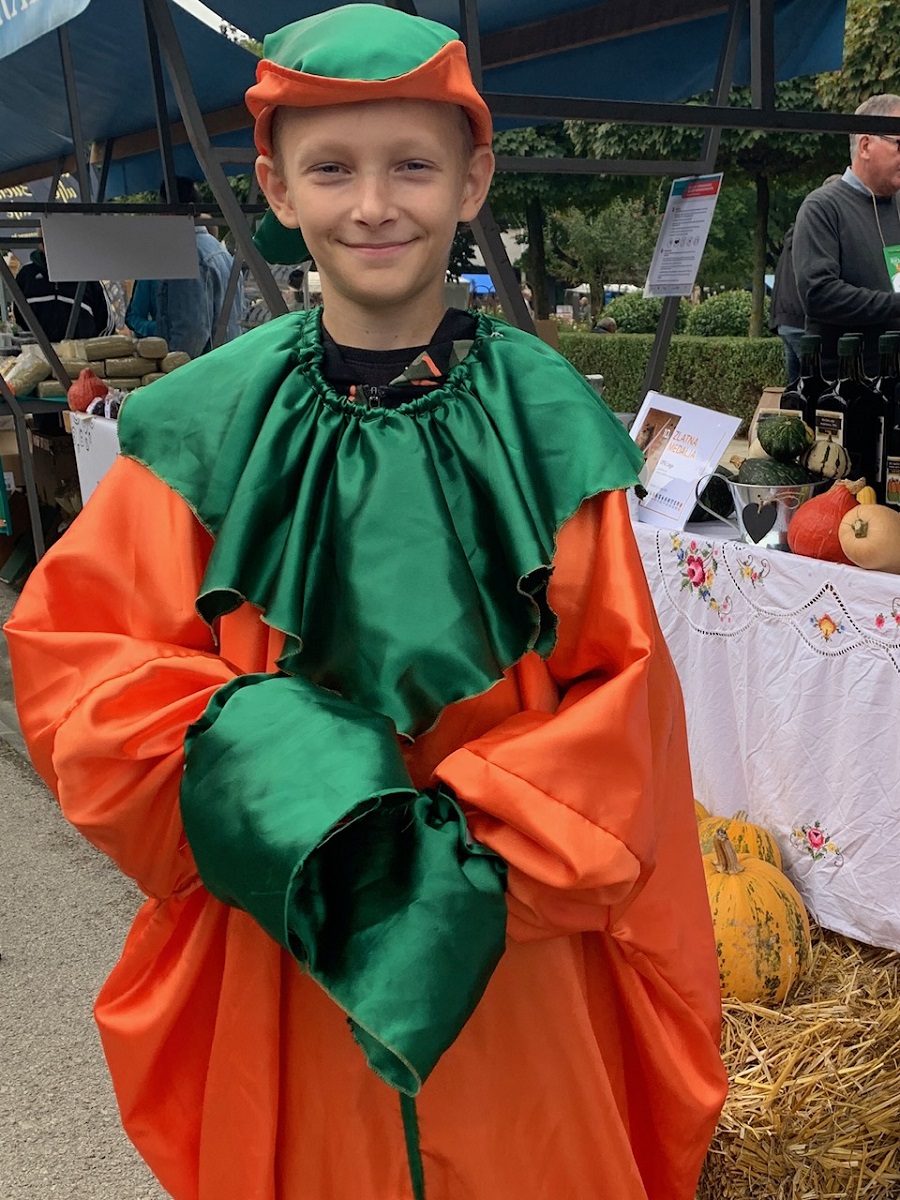
(The sweetest pumpkin at the festival was working the crowd near his family’s product table.)
Croatians love all sorts of fresh vegetables, why don’t they cook and eat more pumpkin? Because the squash is considered animal feed. So sad…
Fresh pumpkin seeds and pumpkin beer were abundant however, and pumpkin seed oil—bučino ulje—was the prize at the festival. An entire street was dedicated to OPG’s selling this nutty-tasting oil and other pumpkin products.
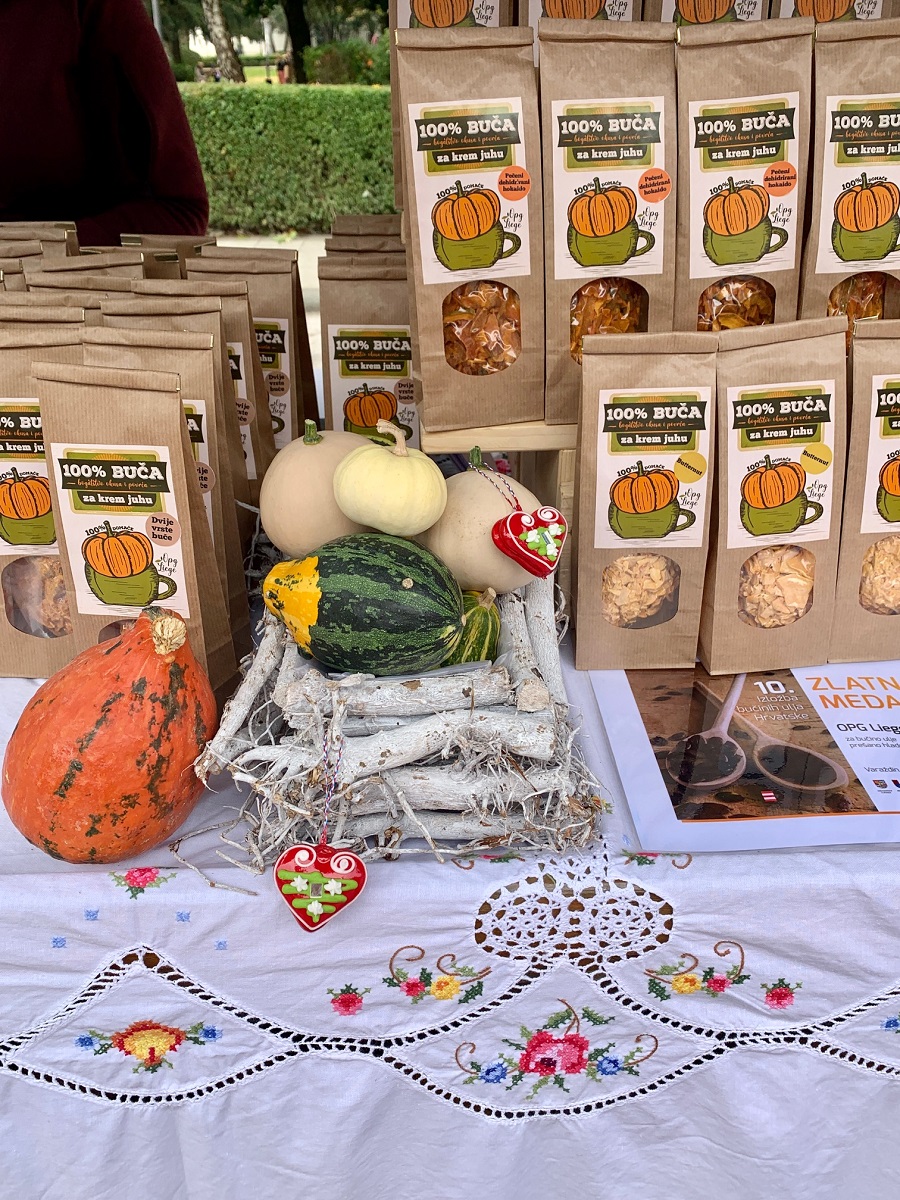
(A dried soup mix, made with 100% pumpkin, is a unique product.)
Pumpkin seed oil
Apparently, bučino ulje is a prestigious business, I noticed that several bottles displayed “winner” stickers. I knew why as soon as the oil hit my tongue—I was blown away by the flavor. I’ve had the store-bought oil and I will never do that again, there’s absolutely no comparison to Cro’s homemade product.
I was instructed on proper usage—don’t cook with the oil; only use it raw; cover food such as leafy greens and bean salad; drizzle it on strudel and vanilla ice cream; add to soups and stews for nutty sweetness. I’m pretty sure I’ll be sprinkling it on everything.
My disappointment over the pie was replaced with glee over the oil.
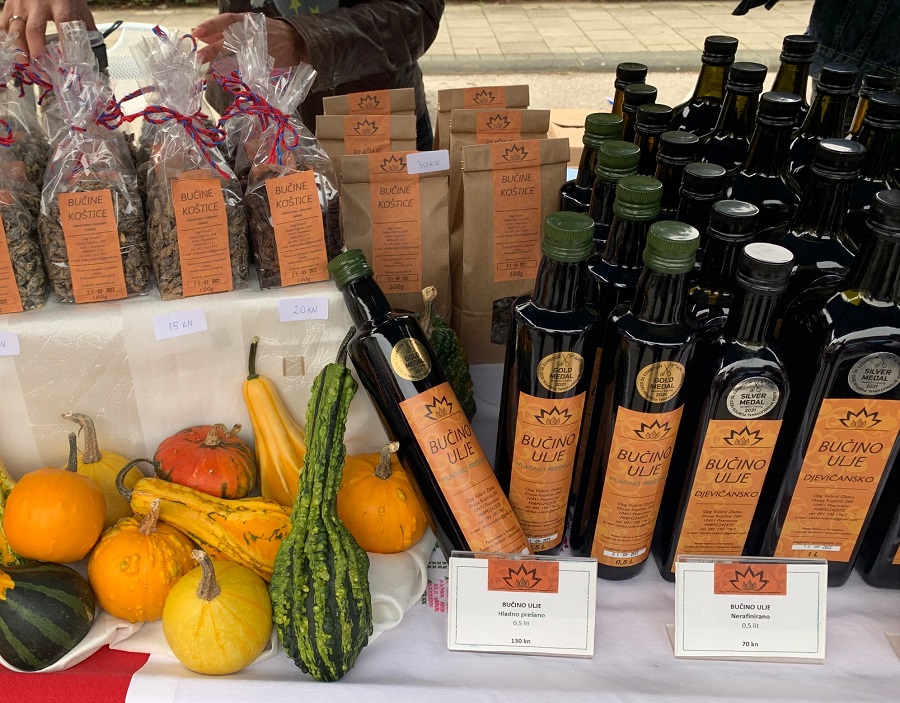
(Award-winning pumpkin oil, along with seeds coated in chocolate and other toppings, are frequently displayed on vendor tables.)
Eliminates wrinkles
Beyond trail mix and culinary applications, pumpkin seeds have serious medicinal credentials. They’re a rich source of vitamin E, zinc, omega 3- and 6- fatty acids, and antioxidants. In this regard, pumpkin seed oil is on par with Croatia’s other superfood—olive oil. It can improve heart health by lowering cholesterol and reducing high blood pressure. For us ladies, it’s an ingredient in skincare products that help hydrate the skin and eliminate the appearance of wrinkles. That right there is enough for me to gulp it.
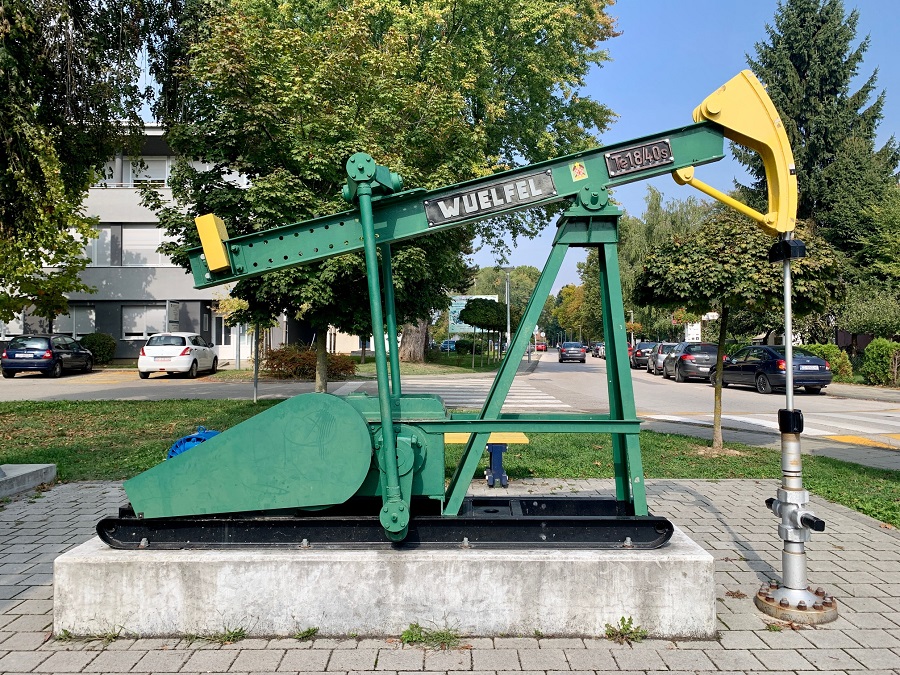
(Not far from the festival, INA’s oil drills can be seen around town.)
Black gold
I thought I’d seen what the town had to offer when things went in a different direction. Ana Gašparović, president of the Association of Heritage Friends and a local tour guide, educated me on Ivanić Grad’s “black gold.” It’s a designation given to the town’s three prominent native oils—pumpkin, petroleum, and Naftalan.
(The Naftalan Special Hospital for Medical Rehabilitation was built to treat skin disorders, specifically due to the discovery of Naftalan oil.)
Black oil began bubbling up from the ground in 1855, when it was pulled by hand. One hundred years later, after World War II, Germans led the first industrial production and oil drills can be seen around town. The headquarters of the oil and gas utility INA is located a few blocks from the festival, along with several other company buildings. Ivanić attracted the nickname “Little Kuwait” for its generous crude supply. Unfortunately, today it’s drying up and production will soon be shutting down.
Slightly further away is Naftalan Special Hospital for Medical Rehabilitation. The facility is dedicated to the treatment of inflammatory skin disorders, such as psoriasis, and features creams and bath oils made from the medical Naftalan oil. Ivanić discovered its natural resource of Naftalan in the 1980s, which is rare. Azerbaijan is the only other place on the planet where the oil is found.
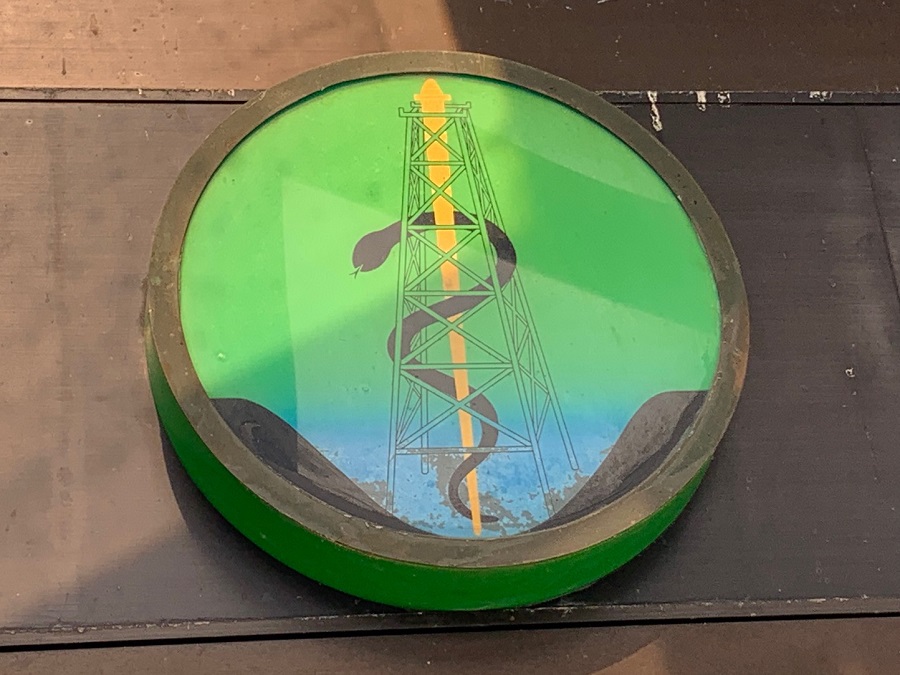
(The integration of the medical and crude industries is represented in a graphic above the entrance to the Naftalan hospital. A snake and staff, symbolizing medicine, is combined with an oil rig.)
Yellow gold
Aleksandra joked with me that Škrlet is Ivanić’s “yellow gold,” a grape varietal that’s indigenous to the Moslavina region. Eight vineyards produce wine from the slopes of the Moslavačka gora Mountain. Janko Kezele, president of Škrlet Moslavina Association and one of the eight family producers, said, “We are proud to produce the wine as we nurture our tradition and identity of our region and our homeland.” Doing my homework for this story, I found it light, fruity, and rather likeable.
(Several items made it home in the author’s backpack: two Škrlet wines (by Kezele and Mikša); 100% virgin pumpkin oil by Bachusha; dried soup mix by OPG Liege; black garlic by OPG Knežević.)
A rural festival
The festival was spread out with multiple locations of vendors, activities, displays, a music stage, and food concessions, and it was packed with visitors. Ivana Alilović, Director of the Zagreb County Tourist Board, said, “We’re happy to have 200+ rural exhibitors participate in this year’s festival, especially during these times with covid.” It’s Ivanić’s biggest pumpkin festival yet and it’s got a lot to offer.
On the train
Riding the train from Ivanić back to Zagreb, I reflected on how a pumpkin festival broadened my perspective. My American brain recalled memories of pie, warm apple cider, and picking pumpkins from a patch. My Croatian experience was a cultural enlightenment that included bučnica, bučino ulje, Škrlet, and a cool history lesson on the town’s industry, plus I met some nice local people.
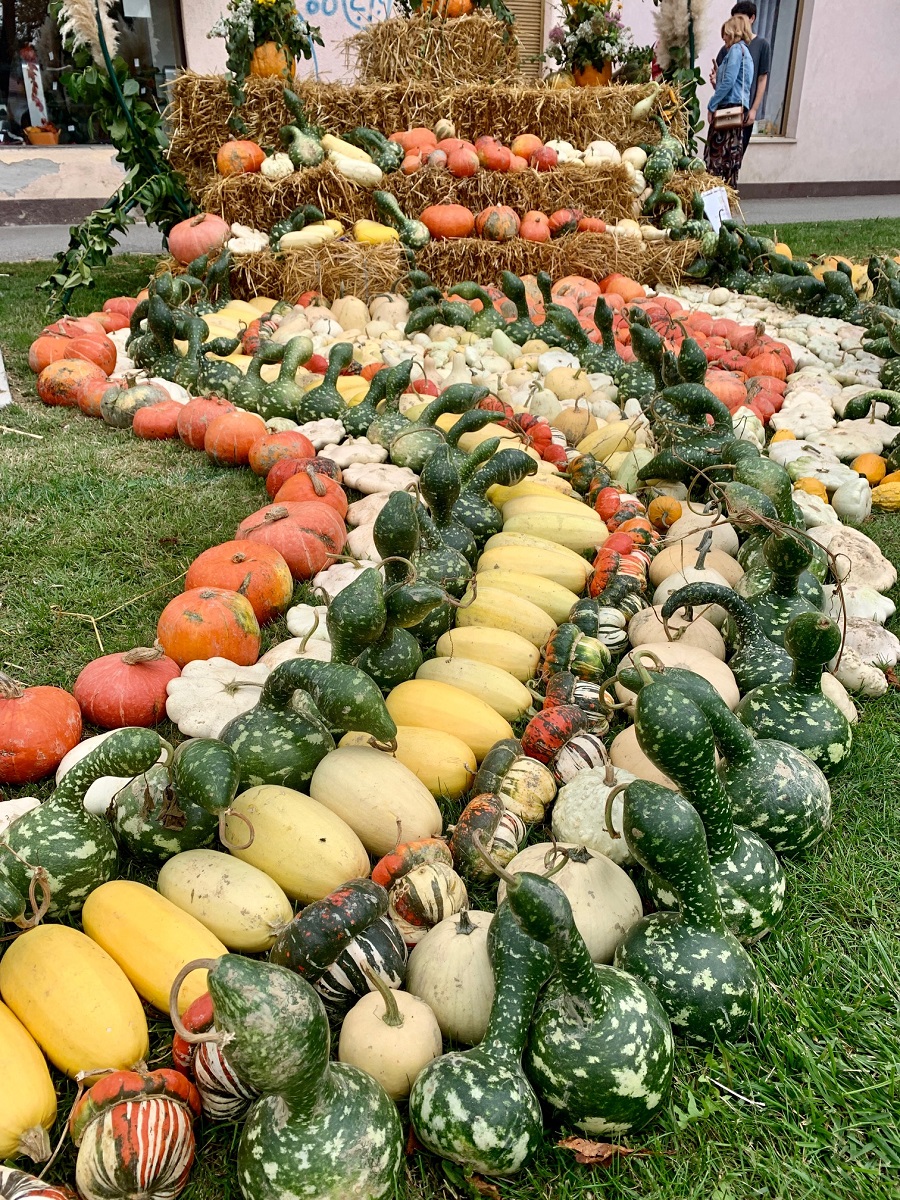
(It takes all shapes and sizes of gourds to make a colorful pumpkin patch.)
Story and photographs ©2021, Cyndie Burkhardt. https://photo-diaries.com
Learn more at TCN’s Digital Nomads channel.
Toy and Pumpkin Festivals Combine in Ivanic-Grad at Bucijada 2021
September 27, 2021 - Ivanic-Grad is the place to be this weekend for all lovers of pumpkins and toys - lots of family fun at Bucijada 2021.
One of the things you learn very quickly living in Croatia is that Croatians love to celebrate their food. But not just in the excellent and healthy dishes made from the freshest seasonal ingredients, but by dedicating festivals to individual fruits and vegetables.
There seems to be an unofficial motto here of 'if it grows, create a festival.' My long-time place of residence, the island of Hvar, for example, hosts a unique lavender festival each June. And nowhere else in the world have I come across an edible dormouse festival.
Among the many niche food festivals you will find on the Croatian calendar are fava beans in Kastela (and yes, fava bean ice cream is a thing), the celebration of chestnuts in Hrvatska Kostajnica, paprika in Lug, cabbage in Vidovec, potatoes in Porec, and truffles in Buzet has been a fascinating culinary journey for me during my time in Croatia. But then it comes to pumpkins, there is only one place to go.
Ivanic Grad, just outside Zagreb, in autumn for the Bucijada pumpkin festival.
Being an adopted Dalmatian boy, my Croatian conversion to pumpkin oil came rather late in life. With the liquid gold olive oil produced in Dalmatia, was there indeed any need for any other kind of oil?
Moving to Varazdin showed me that there was, and pumpkin oil is far more prevalent than olive oil in parts of continental Croatia. The unlikeliest hit of all was vanilla ice cream and pumpkin oil. Try it, it is magnificent.
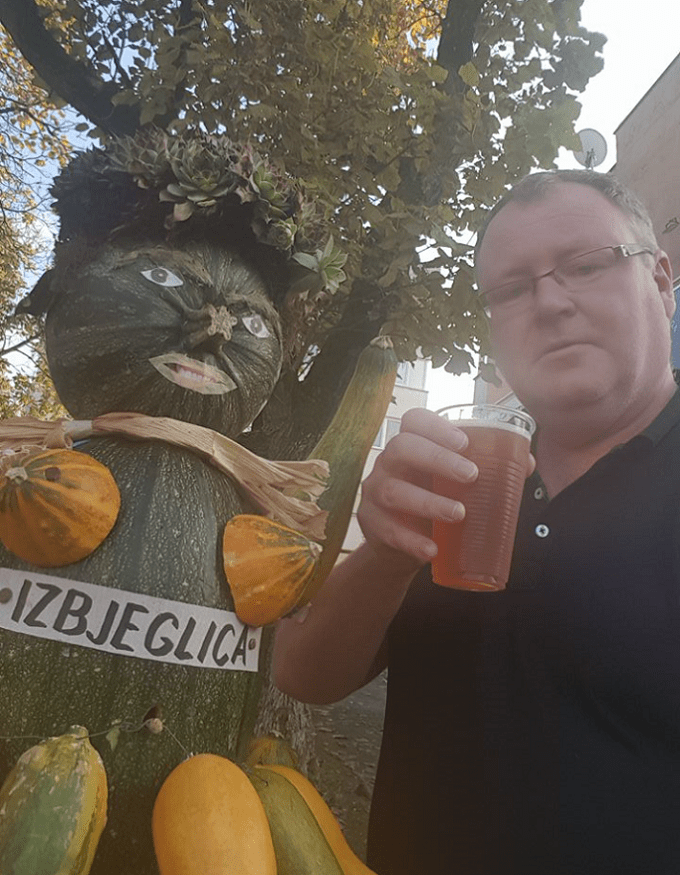
But pumpkin oil is just one use for this very versatile vegetable, whose culinary range is best showcased in the annual pumpkin festival in Ivanic-Grad, known as Bucijada. One of the novelties I tried on my last visit to Bucijada was pumpkin beer, which was surprisingly tasty - almost akin to a wheat beer.
This year's event will take place this weekend, from October 1 to 3, and it really is a great family event, even more so perhaps this year, as the 17th edition of Bucijada coincides with the 7th Toy Festival, thereby giving a double dose of family fun out in the healthy environs of Zagreb county. You can get a snapshot of how Bucijada looks through the eyes of a young visitor in this excellent vlog below.
There is also plenty of gourmet and activity fun for adults at least, not least the opportunity to taste a range of pumpkin products, as well as to get better acquainted with one of the rising stars of the Croatian wine scene - the locally grown grape variety of Skrlet.
Ankica Bester, director of the Ivanić-Grad Tourist Board office, told TCN a little more:
"The novelty of this year's Bucijada is that at the same time the 7th Toy Festival is held at the Zelenjak Sports Park and with SB Naftalan where a rich program has been prepared for the youngest, from performances by First Applause, playrooms, workshops, plays, toy fair and content within the model fortress of Tvrđa Ivanich. At the event itself, the "Educational-presentation center of pumpkin oil" of the association of pumpkin oil producers of Croatia and the City of Ivanic-Grad will be opened next to the Maznica market, where you will be able to see how cold-pressed pumpkin oil is pressed.
"This year's Bucijada is being held in open public areas at several locations in the city center and at the Zelenjak Sports Park in order to adapt to current epidemiological measures."
More details can be found on the Ivanic-Grad Tourist Board website, as well as from the official press release below:
The beginning of October is the right time to visit Ivanic-Grad and the Bučijada exhibition and sales fair.
The seventeenth edition of the largest and most visited tourist, economic and gastronomic event in Croatia this year will be held on October 2 and 3, 2021.
Organized by the Tourist Board of Ivanic-Grad with co-organizers and under the auspices of the City of Ivanic-Grad, Zagreb County, the Tourist Board of Zagreb County and Croatian National Tourist Board, and sponsors: INA d.d., Hrvatske sume d.o.o. and Zagrebacka banka in Ivanic-Grad will host the 17th Bucijada and the 7th Toy Festival.
More than 170 exhibitors from all over Croatia are participating in this year's sales fair, of which 28 are pumpkin seed oil producers, 14 are organic farms and about 50 are family farms.
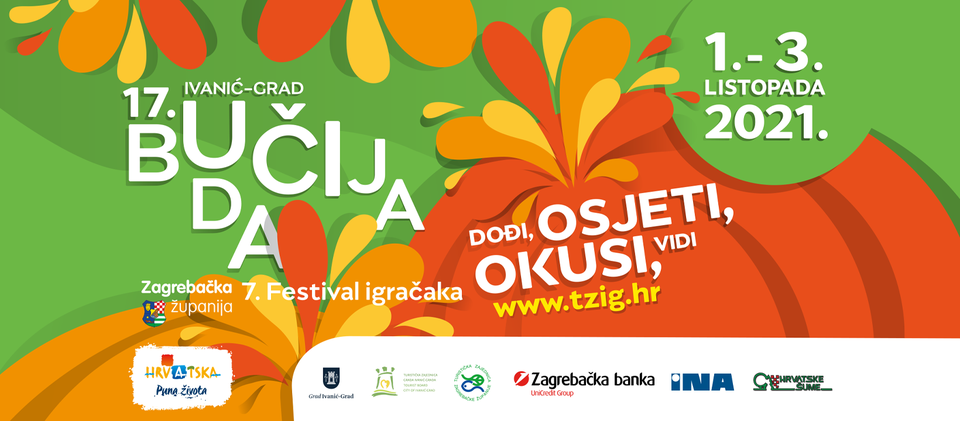
They will offer pumpkins, pumpkin oil, pumpkin products and other eco-ethno products in the city center in several locations. This year as well, the caterers have prepared creative pumpkin menus in their premises, restaurants and rural estates.
Along with pumpkin beer and indigenous skrlet wine, there will be gastro snacks and pumpkins on the town square.
The grand opening of the 17th Bucijada will be held on October 2 (Saturday) 2021 at 11.00 on the stage at Trg V. Nazora in Ivanic-Grad, which will be attended by the mayor of Javor Bojan Les and numerous guests.
After the opening ceremony, at 11.30 am, the "Educational and Presentation Center of Pumpkin Oil" of the Association of Pumpkin Oil Producers of Croatia and the City of Ivanić-Grad will officially open its doors, where you will be able to see how cold-pressed pumpkin oil is pressed.
On Saturday at 12.00 is the opening of the 7th Toy Festival in SP Zelenjak and with SB Naftalan, where a rich program has been prepared for the youngest, from playrooms, workshops, plays and a toy fair, with entertainment from First Applause.
The godmother of the 17th Bucijada, Anita Kajtazi Roth, is coming on Sunday at 10.30.
City institutions and associations have prepared numerous exhibitions, so in the POU you can see the exhibition "150 years of Ivanic-Grad", in the Museum of Ivanic-Grad "Culture and History of Ivanic-Grad", and with the Fire Department Ivanic-Grad exhibitions of mushrooms and small animals.
Several thematic tourist walks were organized, departing from the Visitor Center near the market.
The entertaining part of the program is guaranteed throughout the day, especially with the evening concerts of Petar Graša, Đani Stipaničev and Renata Sabljak. KUDs in traditional Moslavina and Posavina costumes will walk around the city,
and in the Park of Croatian Veterans, a small Pumpkin Village will be arranged with attractive pumpkin decorations, by which this event is recognizable.
The event is held in compliance with all applicable epidemiological measures.
Come, taste, feel, see - 17. Bucijada!
Read more about the unusual food festivals in Croatia in Natural Food Festivals: 25 Things to Know about Croatian Gourmet Goodness.
Weekend for Health With Exercise and Relaxation Activities in Ivanić-Grad
June 8, 2021 - For all those looking to put the troubled past and stress behind them, the Weekend for Health event in Ivanić-Grad may be the solution. The city's tourist board has organized a full program of relaxation, exercise, and meditation activities on June 12 and 13.
After several months of isolation, which affected the physical and mental health of people, it is time for citizens to relax and "reset" in Ivanić-Grad. A series of free activities aimed at health, as part of the Weekend for Health event, will be held at the Zelenjak Sports Park next to the Naftalan Special Hospital and at their new swimming pools, in compliance with all epidemiological measures, reported Turističke Priče today.
Those who want to swim for free can do so on Saturday and Sunday, from 9 am to 7 pm at the new SB Naftalan pools. For those younger, from 7 to 10 years, a swimming school is organized both days, while adults will be able to enjoy functional training, aqua aerobics, and senior Pilates. In addition to swimming pools, sugar and blood pressure measurements will be organized in the morning, as well as a series of lectures and workshops on the topic of active aging, running, stretching, aromatherapy, how to cook for children, and more.

Ivanić-Grad Tourist Board
On both days of the Weekend for Health event, people of all ages will be able to rent props for table tennis, badminton, bowling, play tennis on the tennis courts, and have a good time. The youngest ones can join the workshop for making puppets, and there will also be acting for children from 10 am. From 4 pm, they are provided with entertainment by dancing or playing on the training ground. Adults can relax during this time with breathing exercises, sun salutations, or a gong bath. If you are not ready for exercise and an active weekend, you can watch the Croatian Junior Crossbow Championship, children's handball tournament, or streetball. Explore Ivanić and find out which are the three black gold medals of Moslavina on an interesting educational walk with a guide on Saturday and Sunday at 11 am.
You can take a break with healthy snacks in Caffe bar Naftalan 2, Dribbling Food Caffe, or Café bar Zelenjak. Local products can be found at a small fair of local family farms. Enjoy an open-air concert by Jelena Mesarić and Saša Tadić by the old pool on Saturday night from 8 pm.
In order for us all to remain healthy, safe, and happy, care must be taken to adhere to epidemiological measures. Therefore, the number of seats in some groups is limited and it is advisable to reserve your seat in advance. For group training organized by the Special Hospital Naftalan, you can do it by e-mail at This email address is being protected from spambots. You need JavaScript enabled to view it. or by phone on 01 2834 533. For other content, there is an e-mail: This email address is being protected from spambots. You need JavaScript enabled to view it. or number 01 2881 591. In case there is bad weather, events will be unfortunately canceled.
There will be no shortage of rich events for the rest of the month. A weekend for wellness and recreation awaits you at the Petek Excursion Site and the Sport Hotel on June 19 and 20. Next, June 26, a weekend in nature, ie hiking in the Marča forest and a visit to the Kezele Rural Tourism. Detailed information about entertainment events is available on Facebook and the website of the Ivanić-Grad Tourist Board.
For more on lifestyle in Croatia, follow TCN's dedicated page.
Smart City Ivanic-Grad Gets Solar-Farm Buildings and Super Fast Internet
January 4, 2020 – Following the introduction of free WiFi in public places, Smart City Ivanic-Grad surges forward with smart technologies, constructing a solar power plant on public buildings and introducing ultra-fast internet for all
Teenagers in Ivanić-Grad have cast their eyes down the tracks ever since the railway came to town. You can understand them doing so. Less than 40 kilometres from the cool, contemporary European capital of Zagreb, day trips to the excitement and buzz of the big city are looked forward to and taken at any opportunity. But, over recent times, Smart City Ivanic-Grad has been edging towards becoming its own little centre of contemporary cool.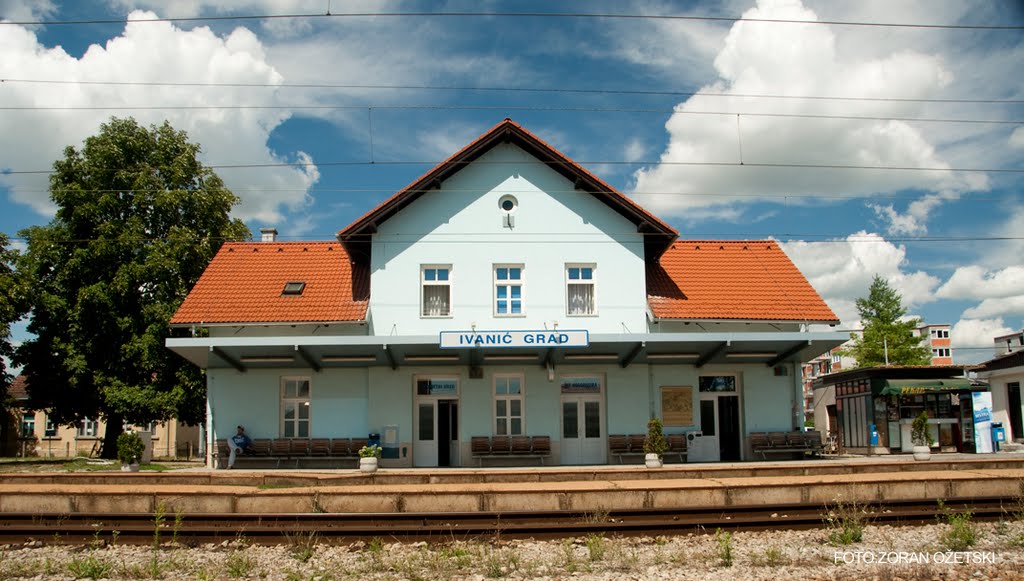 Ivanic-Grad train station © Zoran Ozetski / Grad Ivanic-Grad
Ivanic-Grad train station © Zoran Ozetski / Grad Ivanic-Grad
Smart City Ivanic-Grad is the name of the programme under which a series of energy-saving, eco-friendly and modern technologies is being adopted by the town. First came the introduction of free WiFi around the central city. The next stage of its grand connectivity investments come in the form of ultra-fast internet. By 2023, A1 Hrvatska will have invested more than HRK 77 million in the construction of the next-generation broadband access network that will enable internet speeds of up to 100 Mbit/s for residents of Smart City Ivanic-Grad, nearby Dugo Selo and the municipalities of Brckovljani, Kloštar Ivanić and Križ. The project is to be co-financed by the European Regional Development Fund. Construction will begin in the summer of 2021 and should be completed by the end of 2023.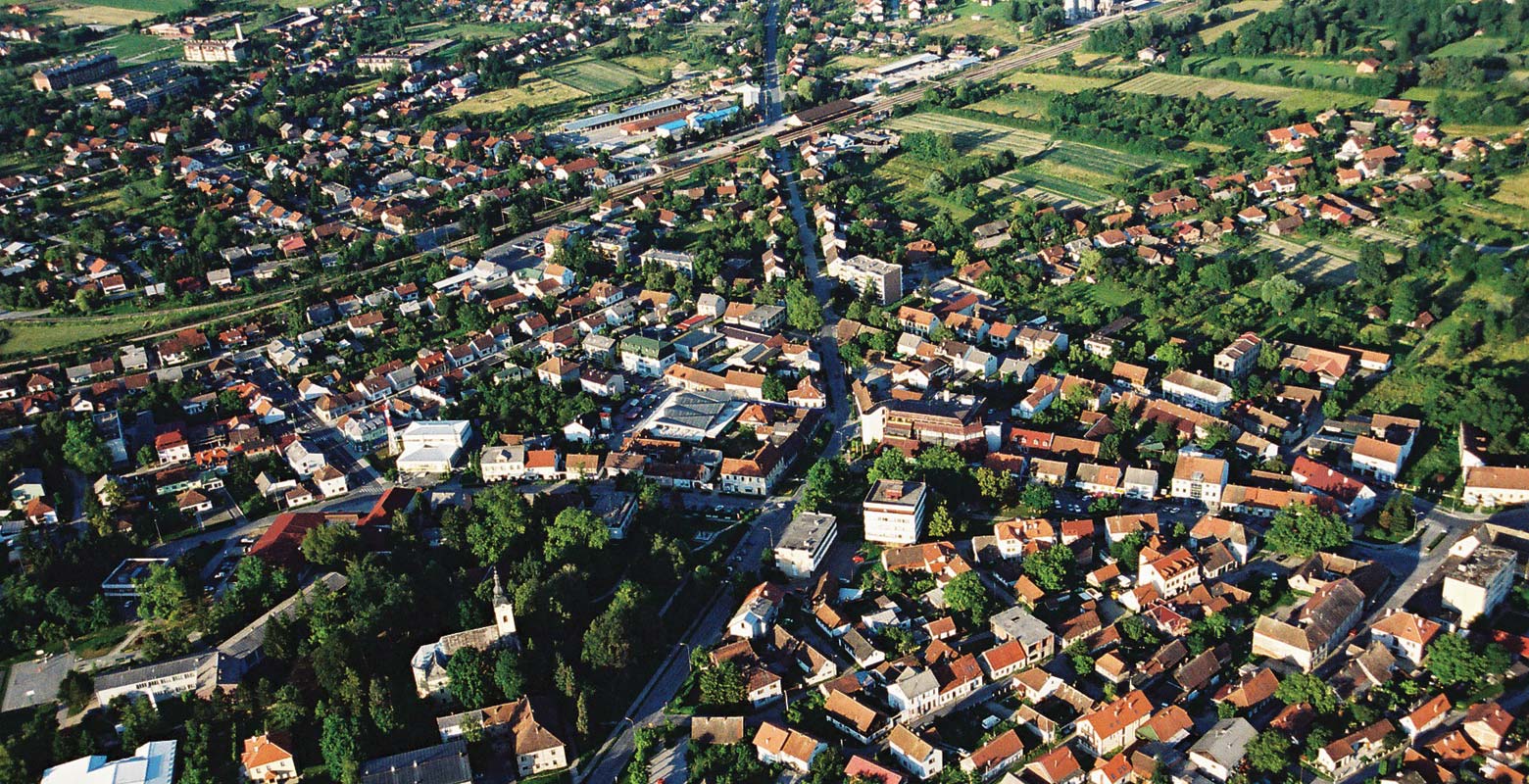 Ivanic-Grad © Visit Zagreb County
Ivanic-Grad © Visit Zagreb County
Another aspect to Smart City Ivanic-Grad's ambitions is Solar City Ivanić-Grad whereby a solar farm is set to be constructed throughout the city, with solar panels placed on public buildings. The energy produced by the panels will primarily be consumed by the buildings on which they are placed, with any excess energy delivered into the grid. So far, planned locations for the solar panels include five kindergartens, a museum, the college, library and university, a hall in Posavske Bregi, Alojz Vulinc Memorial Home, the Modular Wood Technology Entrepreneurship Incubator, Zelenjak Sports Park, the Old School in Dubrovčak Lijevo, the city administration building and two utility companies. The total value of the solar farm project is more than 10.2 million kuna, and the start of works is expected in the first quarter of next year.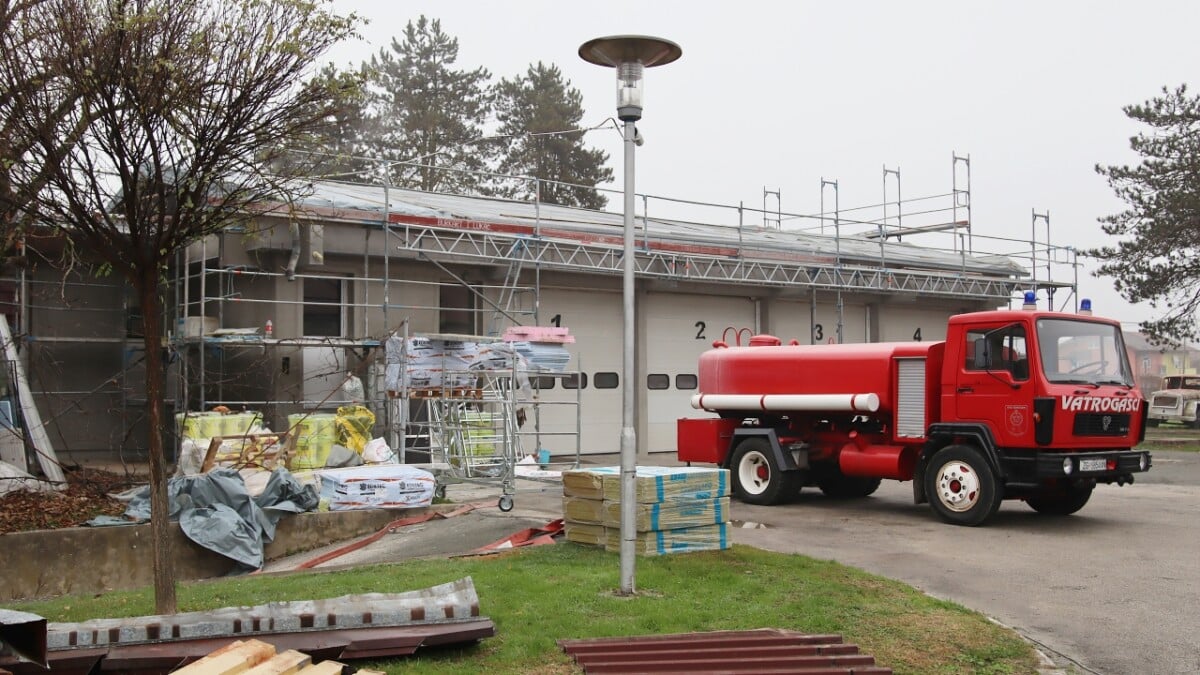 Energy-saving LED public lighting system has been introduced in Ivanic-Grad © Grad Ivanic-Grad
Energy-saving LED public lighting system has been introduced in Ivanic-Grad © Grad Ivanic-Grad
Already completed projects in the Smart City Ivanic-Grad scheme include LED public lighting, which saves 62% of energy consumption, a charging station for electric vehicles in Moslavačka Ulica, a smart bench near Ivan Švear High School and a system of public bicycles at three locations in the city.
Even nearer to Smart City Ivanic-Grad by train than the capital is Dugo Selo. As TCN reported last year, Dugo Selo will very soon be connected to a great wealth of European cities and countries by high-speed rail. It's less than 20 minutes to Dugo Selo by train from Ivanić-Grad. Soon, teenagers of the town will be able to cast their eyes down the tracks and have much more exotic destinations within reach than the regular day trips to Zagreb.
Naftalan Hospital One of Key Drivers of Health Tourism in Zagreb County
ZAGREB, February 23, 2020 - Zagreb County has significantly developed its tourist trade and infrastructure, and Naftalan, a special hospital for medical rehabilitation in Ivanić Grad, plays a marked role in that.
Tourism Minister Gari Cappelli, who visited the hospital recently, praised the development of medical tourism and Naftalan for efforts to upgrade its business. Cappelli said that medical tourism was one of the three strategic goals of the further development of Croatia's tourist trade.
This hospital in Ivanic Grad, some 40 kilometres southeast of Zagreb, is expanding its facilities through an investment project worth HRK 63.5 million (€8.5m) which includes the upgrade of the existing swimming pools and other amenities.
Naftalan, founded in 1989, successfully performs "treatments with the help of thermal saltwater and healing naftalan oil – which makes the hospital unique globally," according to the information available on the hospital's website.
"This mineral oil is included among natural health factors, and our experts developed a system of its use in baths – that is, naftalan therapy."
Naftalan is the only hospital in Europe and one of the few in the world to provide treatment for skin and inflammatory rheumatic diseases using a unique natural resource - naftalan mineral oil. Naftalan is a therapeutic mineral oil that is commercially used in medicine only in Azerbaijan and Ivanić Grad.
Combined with other modern therapies, naftalan efficiently treats psoriasis and diseases of the human musculoskeletal system, says the hospital.
More tourism news can be found in the Travel section.
Pumpkin Festival - Bučijada in Ivanić Grad Next Weekend
It's autumn, and in continental Croatia that means that the centre of the pumpkin admiration focuses on Ivanić Grad, where a pumpkin festival has been organised for the past 15 years.
Bučijada, as it's known in Croatian, always takes place during a weekend in October, and this year it's next weekend, October the 5th and the 6th.
Organised by the Ivanić Grad Tourist board, this year's pumpkin celebration includes a meeting of producers of pumpkin seed oil from Croatia, several exhibitions by Croatian artists (including Ivan Lacković-Croata, probably the most notable Croatian naive artist of the 20th century, and an exhibition of sculptures and installations inspired by - the pumpkin!).
During the entire weekend, visitors will be able to purchase all types of pumpkin products: pumpkins themselves, pumpkin seed oil, flour, cookies made from pumpkins etc. (There is no Starbucks in Croatia yet, but if there were, they'd be there making their exclusive pumpkin spice lattes). Almost all restaurants and bars in Ivanić Grad will offer dishes made from pumpkins, and Crafter's brewery will offer their pumpkin ale on the main square.
If you're not into beer, and rather prefer wines (NOT made from pumpkins!), you're in luck, as another Ivanić Grad tradition also takes place this week.
The association of producers of the indigenous Škrlet white wine planned their Škrlet week to coincide with the Bučijada. So, during the week there will be presentations of various Škrlet wines by different producers in Zagreb and Zagreb county, and during the weekend they will feature prominently on the main square in Ivanić Grad with their Šrklet Corner, where you'll be able to taste and purchase Škrlets by 8 producers. You should taste them, as they've won 5 Decanter's medals this year!
In order to make it easier for people to get from Zagreb to Ivanić Grad (and especially back, after all that Škrlet and pumpkin ale and bučnica), a special Pumpkin Train (Bučko-Express) has been organised to take the pumpkin-lovers from Zagreb to Bučijada. It leaves from Zagreb's main station (Glavni kolodvor) to Ivanić Grad on Saturday and Sunday morning at 09:20 and returns to Zagreb at 17:25. The return ticket costs 25 kuna, and you can return a bit earlier, or later as well.
There's really no excuse for anyone who loves pumpkins not to go to Ivanić Grad and their pumpkin festival next weekend!
Pumpkin Festival Starting in Ivanić-Grad
The annual festival takes place over the weekend.


